Day 1: Recovery
That first night, Bryson had taken ill. He was up in the night and had a high fever by morning. Already we knew our itinerary would need to be adjusted. We reached out to the local LDS Branch President for some help in giving Bryson a priesthood blessing. While we had planned to see Bethlehem that afternoon, we opted to stay put. Our tour guide, Aladdin came by to check in on us and helped ease our understanding of what to expect with the threats and attacks going on. None of us felt we needed to vacate and decided to continue on with our plans the next day, in hopes that Bryson would be feeling better.
Sure enough, Bryson recovered – nothing short of a miracle and answer to prayer that he bounced back so quickly. Sometimes we struggle to choose our next destination, and this leg was one we never felt a particular “go here” about, but I can say the Lord fully supported and blessed us in making it possible for us to be here.
One thing you’ll notice in these photos and this trip log – we saw a LOT more than most tourists in Israel get to, and we saw it largely on our own. As a result of the war, and that being right on the heals of COVID, what once was a 4.5 million tourist-per-year industry was found relatively empty.
Day 2: Mount of Olives, Gethsemane, Orson Hyde Memorial, BYU Jerusalem Center, Caiaphas
Our first day was Saturday, which was Shabat in Israel. It was different to attend sacrament meeting on a Saturday, but it was also a meaningful opportunity to visit Gethsemane and the Mount of Olives before we attended church. We started at the Mount of Olives, overlooking the city, then walked the Orson Hyde Memorial trail on a property the church bought. Afterwards, we attended church at the BYU Jerusalem Center. The chapel had large, open windows overlooking the Old City Jerusalem and the Mount of Olives. How can you not take in and reflect the significance of what the Savior had gone through for each of us as we partook of the bread and water in His name. It was a sobering and unforgettable experience. Due to the youth in the Branch gone to FSY, my sons were asked to help pass the sacrament together.
The large tree behind us in this first picture is called the “weeping tree”. It is said to be over 2.000 years old which would mean it would’ve been present when the Savior atoned for the sins of the world.
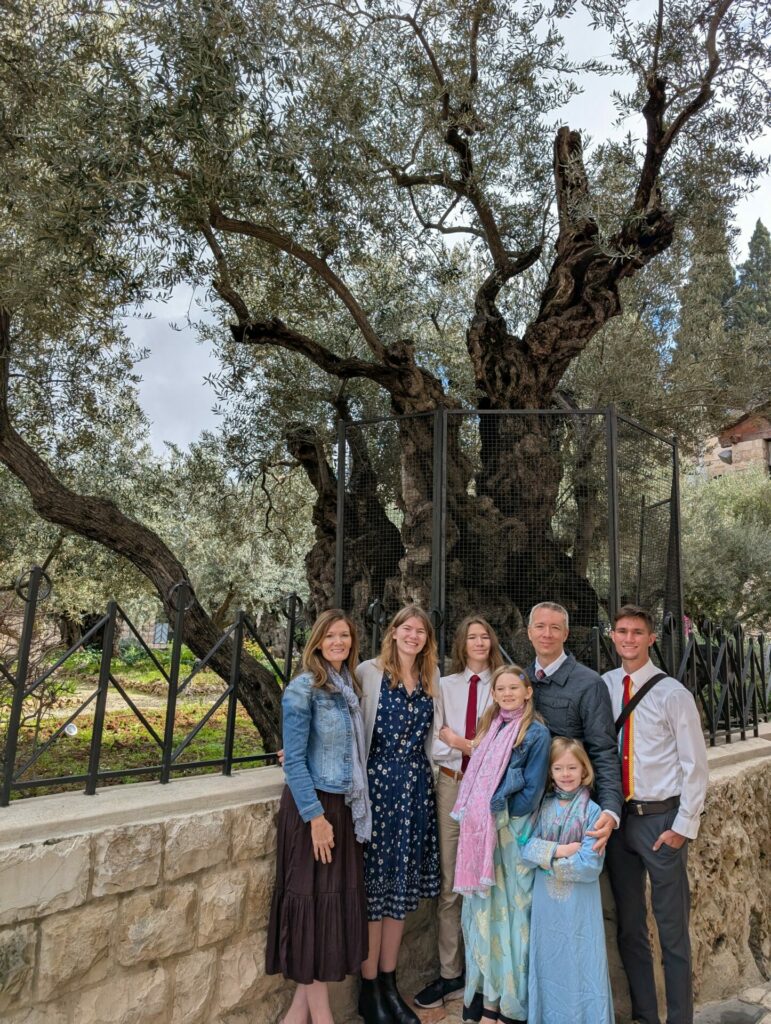
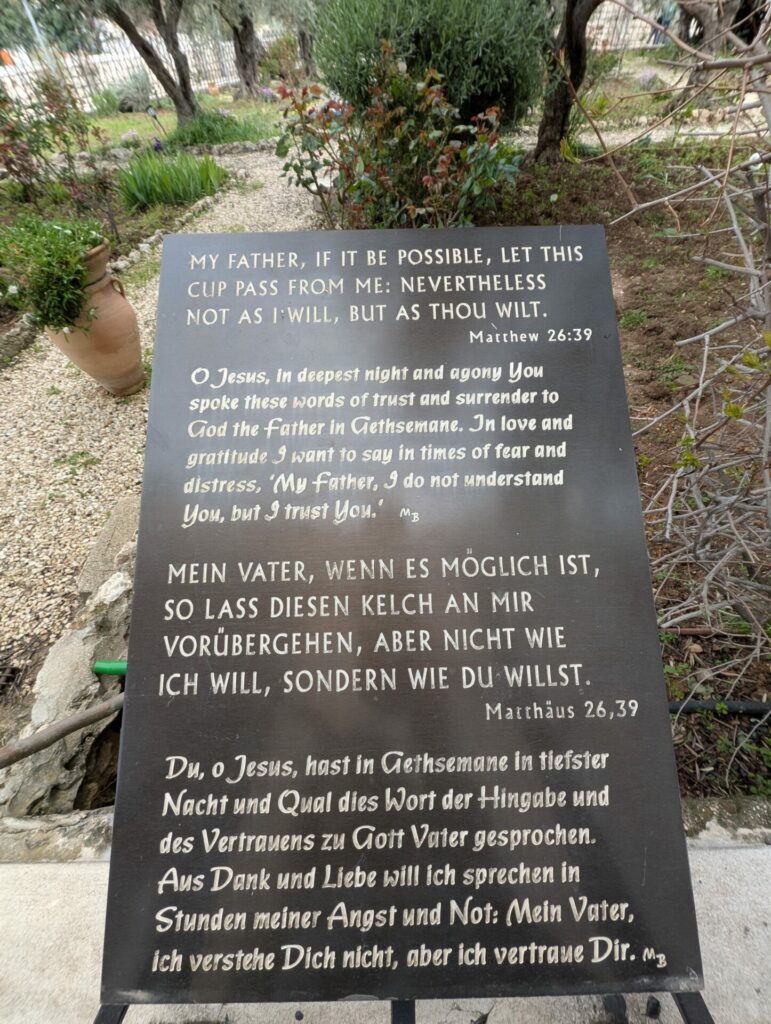
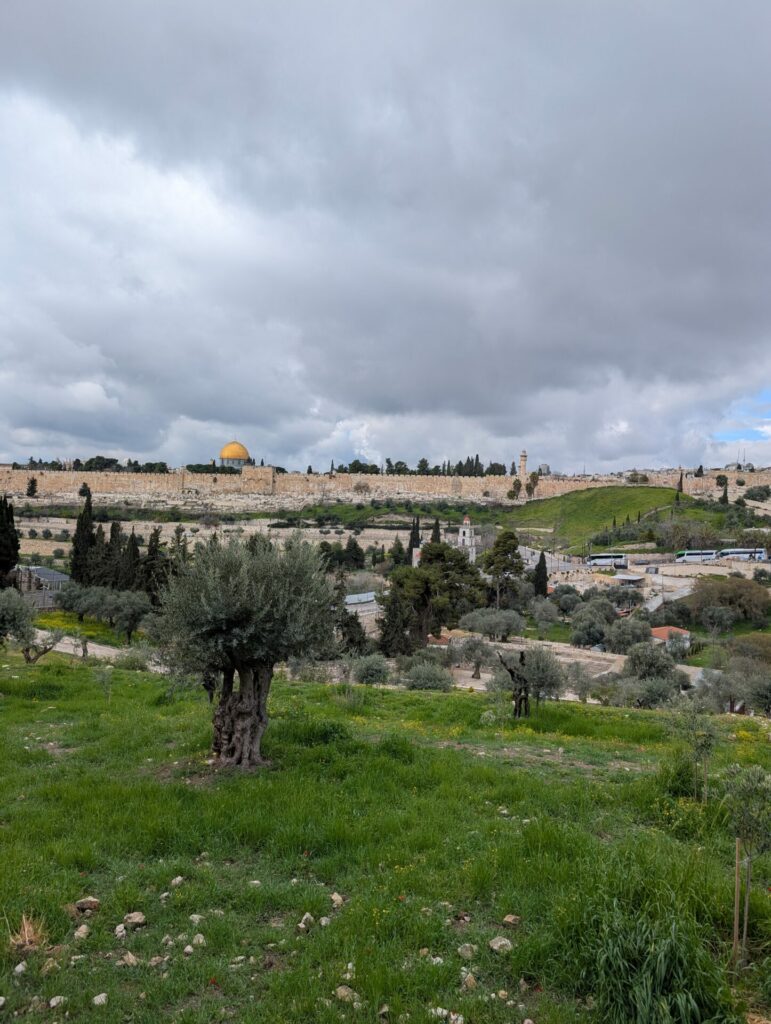
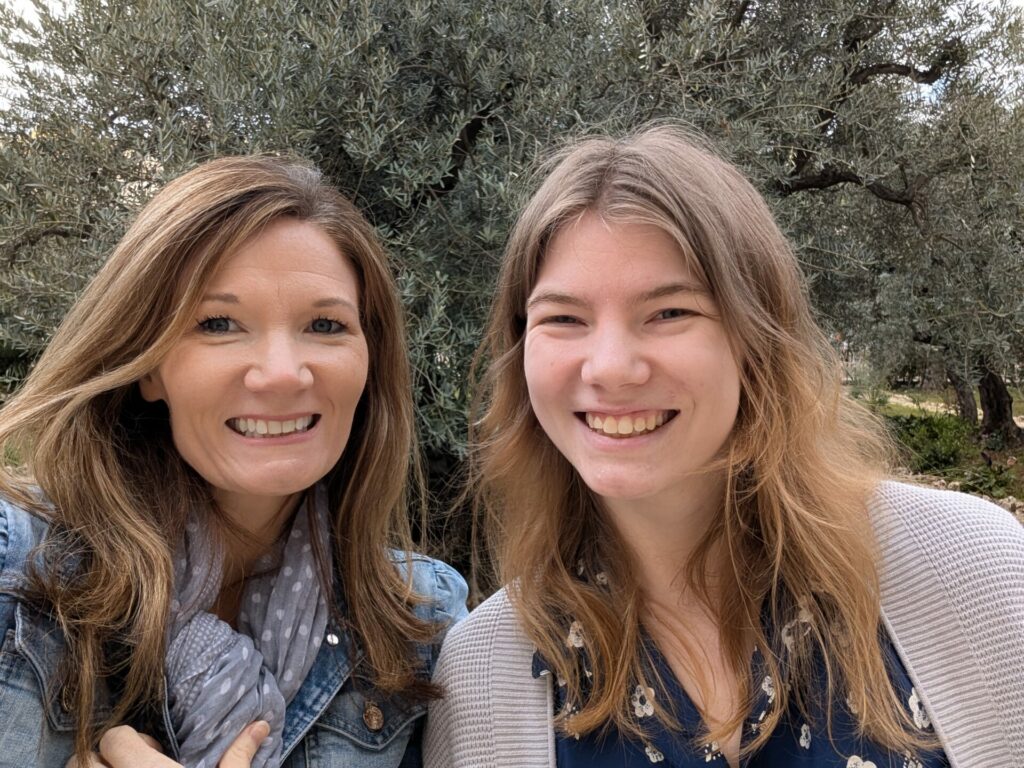

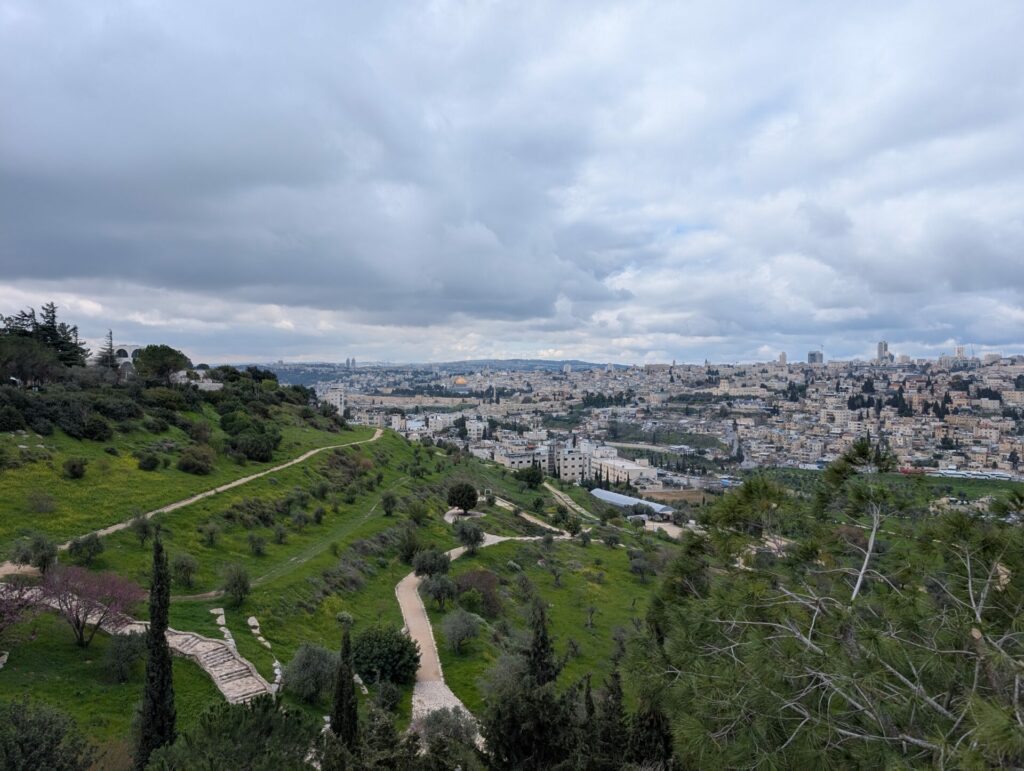
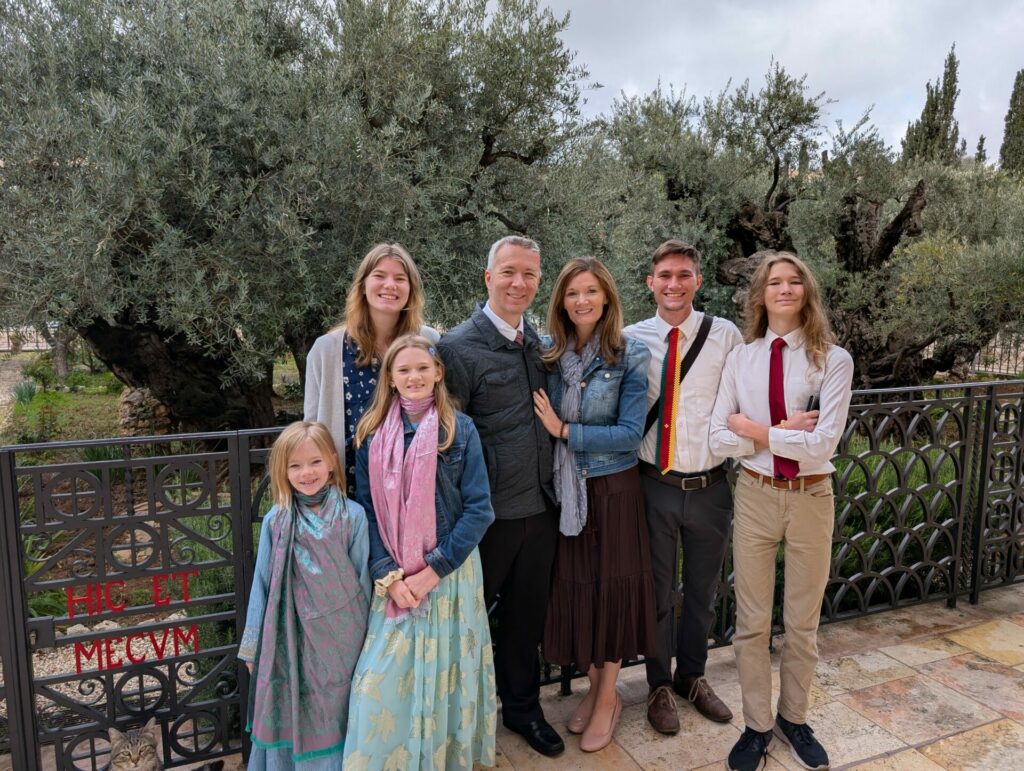

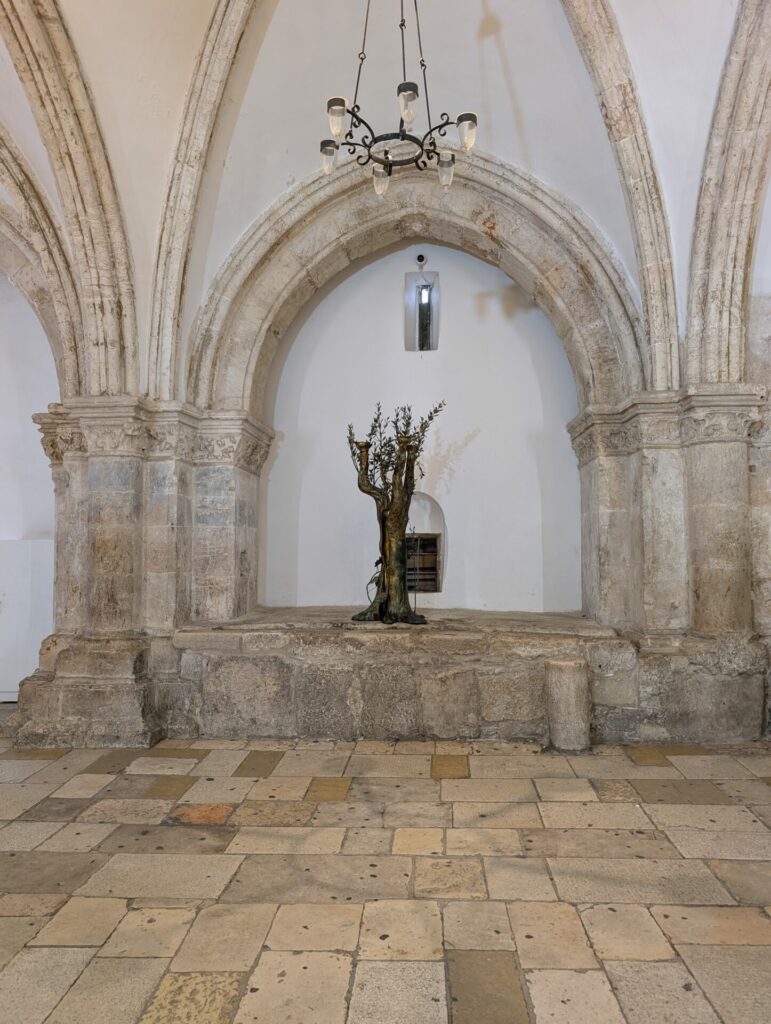


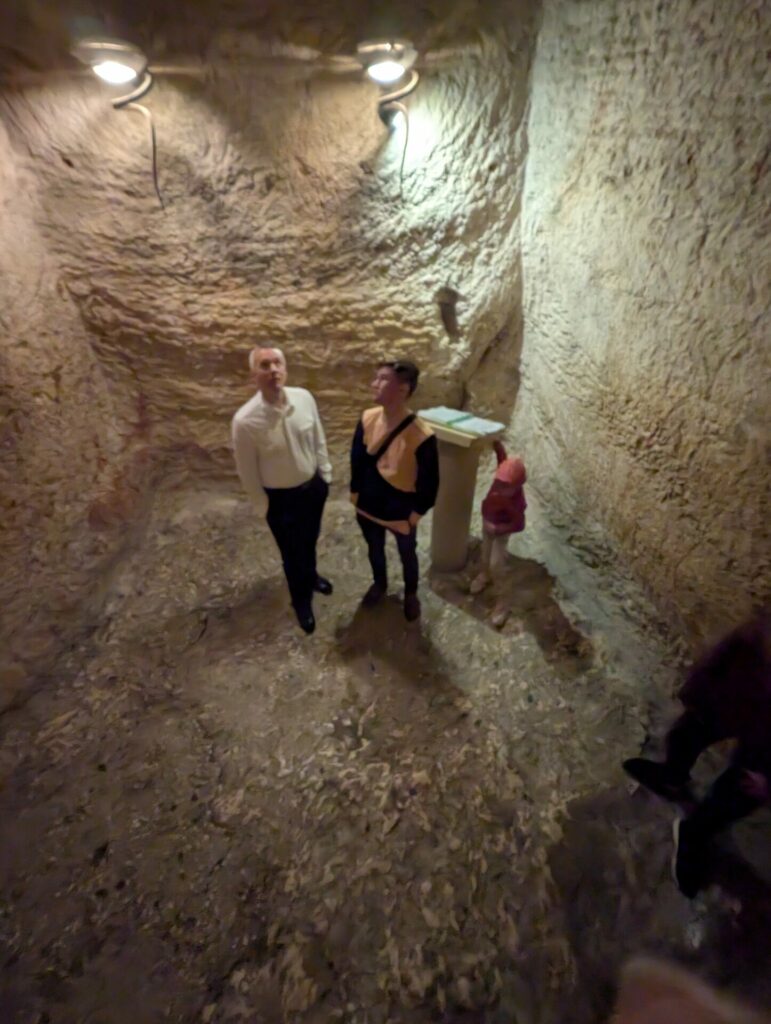
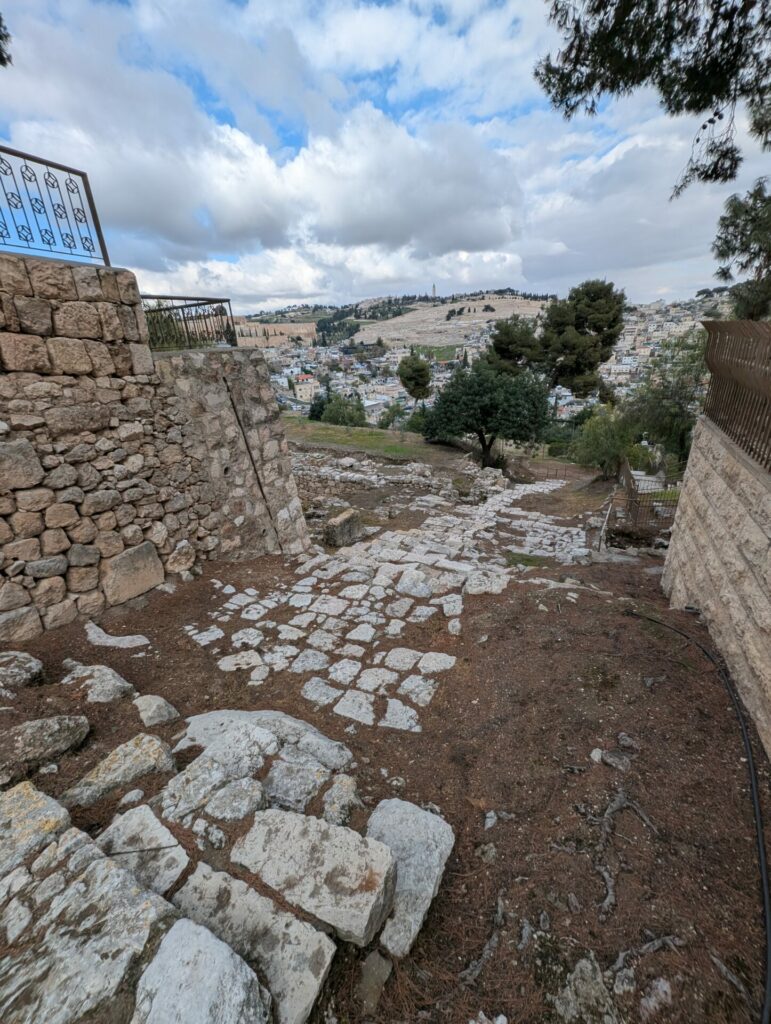
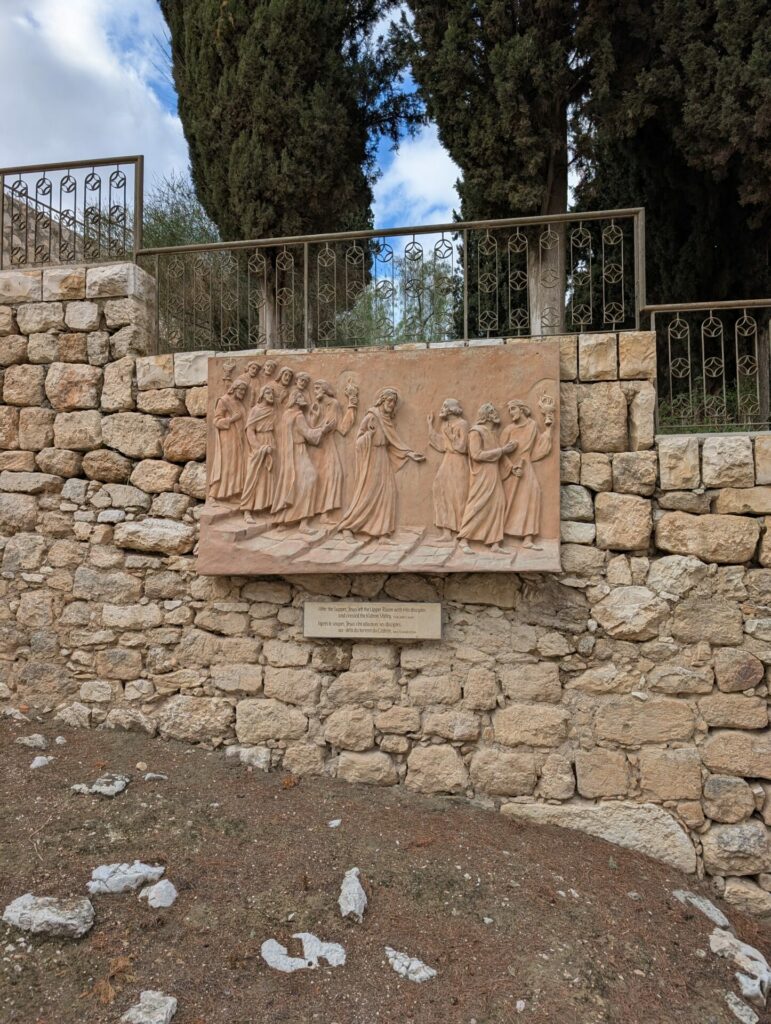
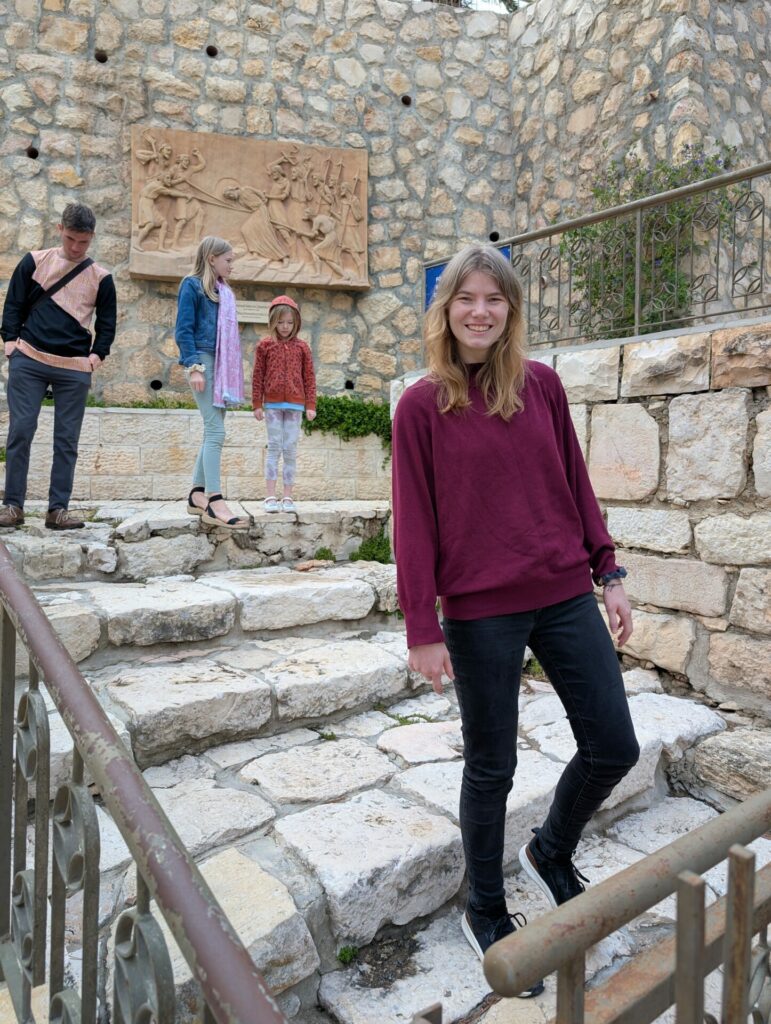
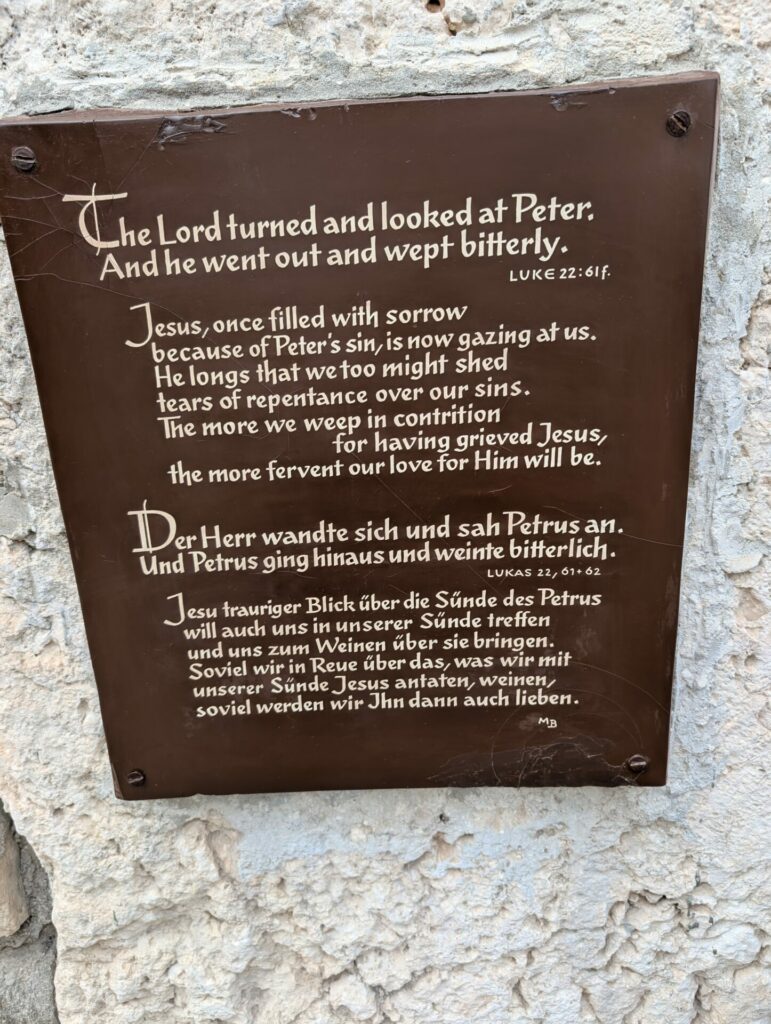
After church, we were invited to stay for a potluck lunch with some locals and enjoyed in some great conversation. We then went to the place where the last supper was said to have taken place and to the house of Caiaphas where the Savior was imprisoned. And finally, we were shown the pathway into Jerusalem from the mount of Olives, where the Savior would’ve walked as he was taken from Gethsemane to Pilot to be tried.
Day 3: Bethlehem, Church of the Nativity, Shepherd’s Fields, Jerusalem Promenade, Potters Field
First – I have to say that Jerusalem is a beautiful city. There’s the striking style of light-colored limestone, meticulously maintained, offering a sense of both strength and respect. And those rolling hills with outstanding scenic overlooks around every other corner!
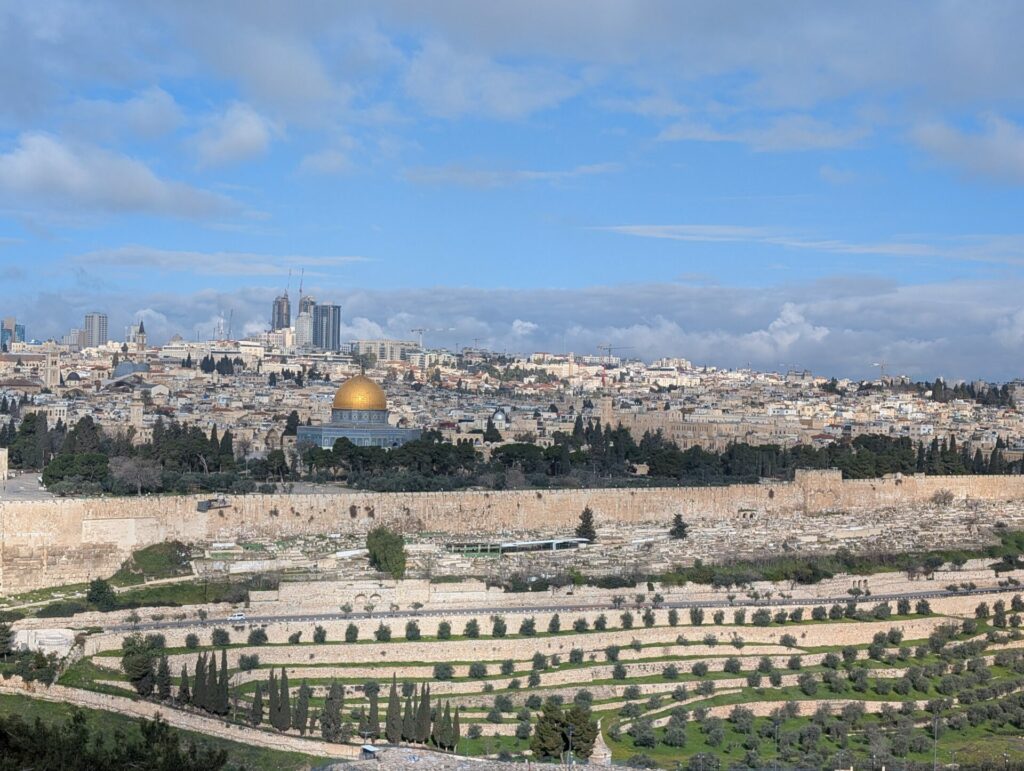
Entering Bethlehem offered an unexpected perspective into local life. Though only minutes from Jerusalem, it’s technically part of the Palestinian West Bank, with a wall and security checkpoint separating them. Since the small town of Bethlehem has long relied on tourism for it’s economy, this wall plus hostilities between Israel and Hamas causing a year and a half of war (and counting), result in a rather poor Bethlehem.
Regardless, we were able to enter and retrace the steps of the Savior’s birth. Or at least… a close approximation. As with most sites in the area, there’s a big caveat our tour guide was very clear about: “according to tradition…” We’ll go into that further another day!
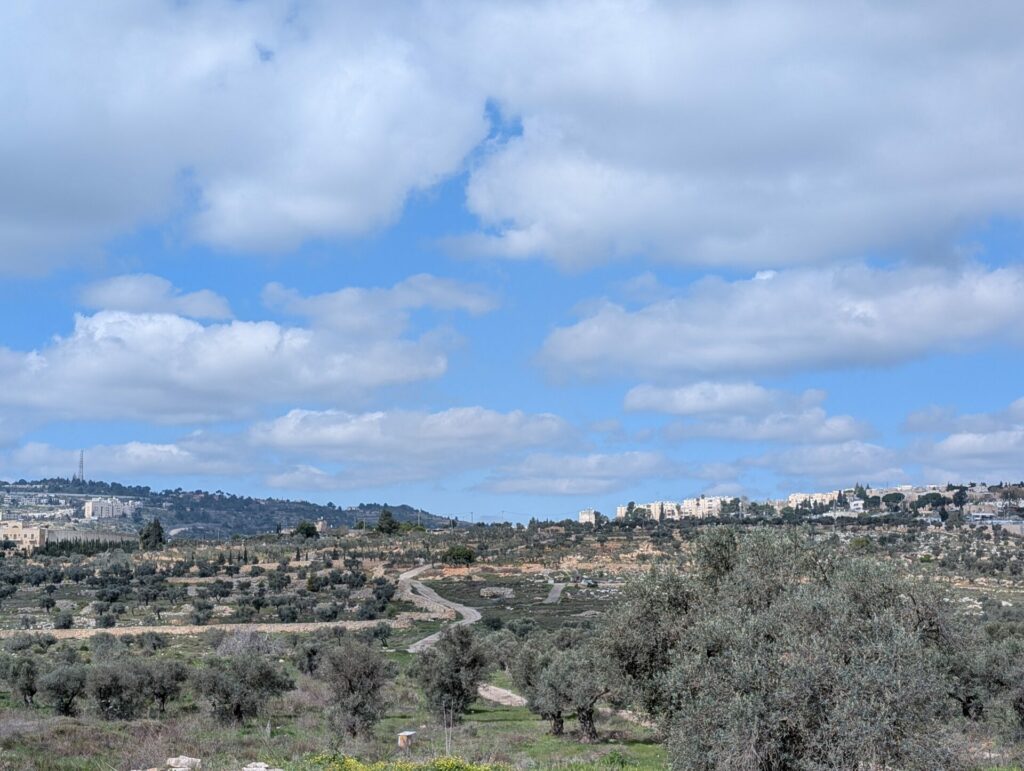
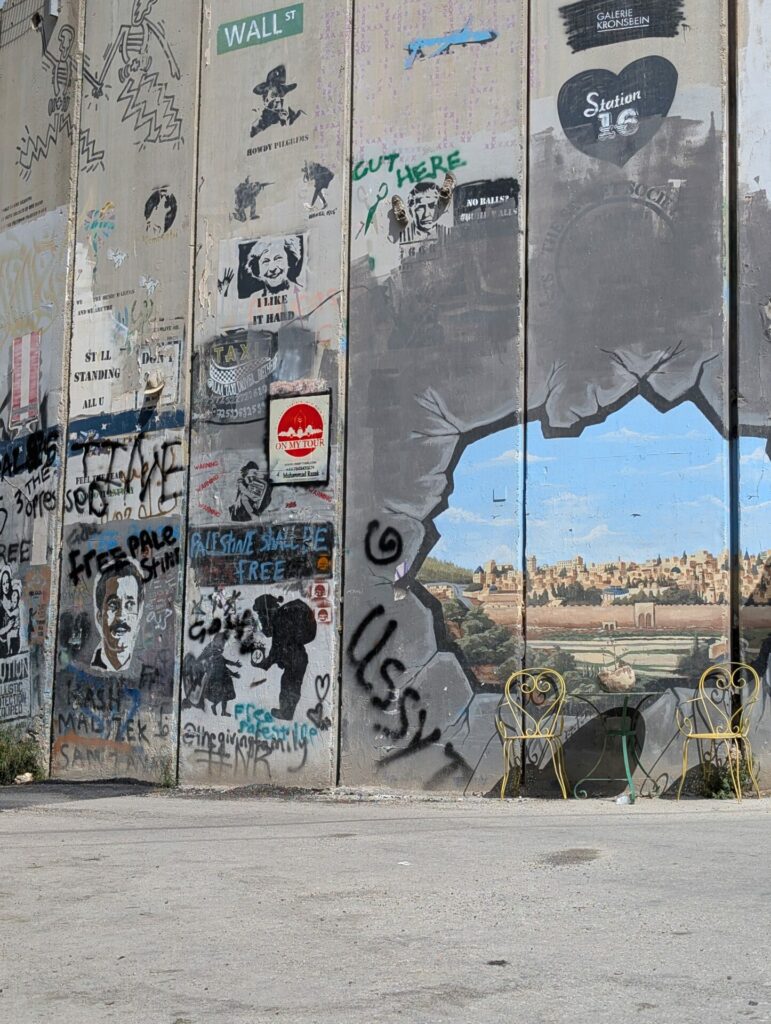
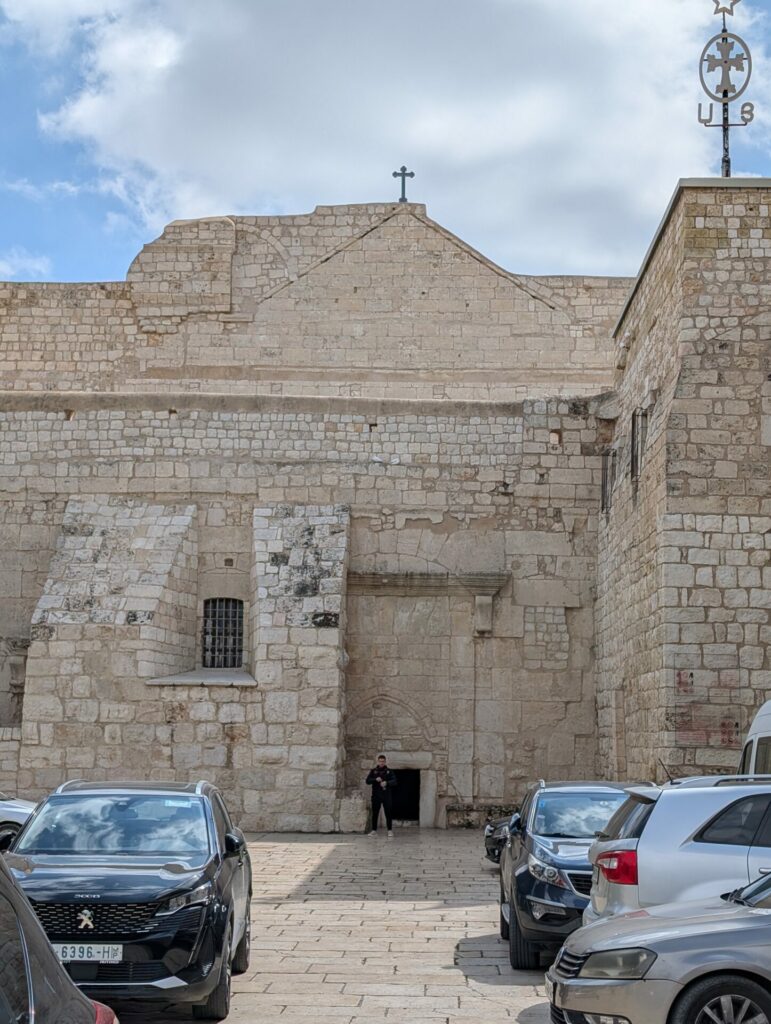
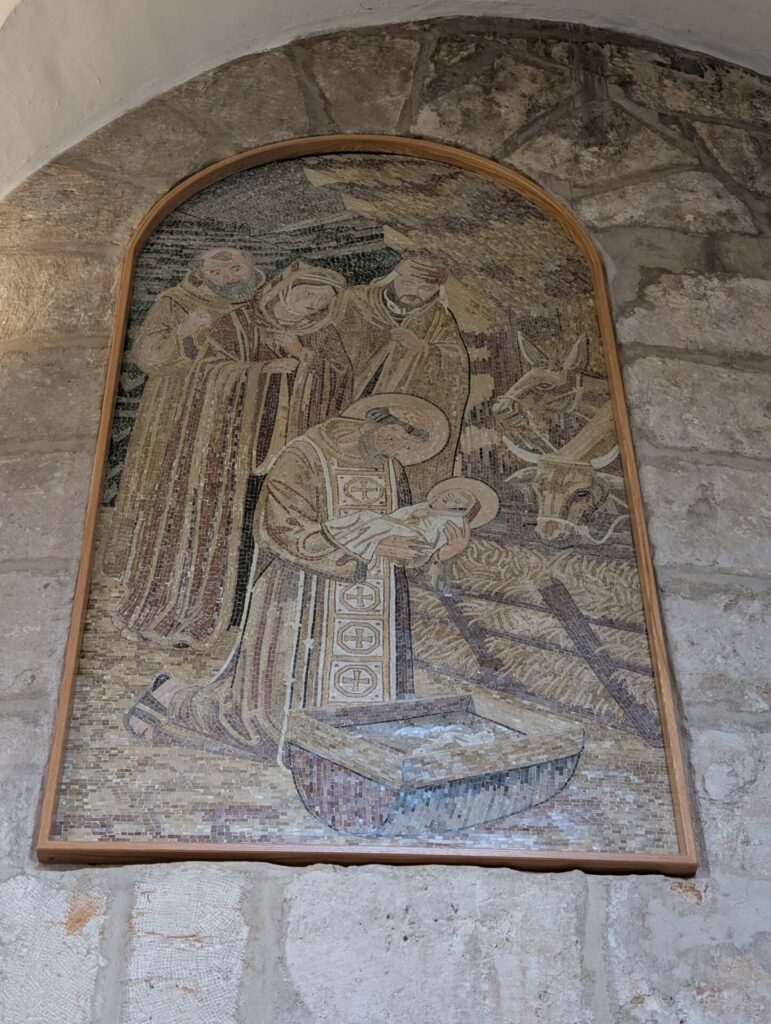



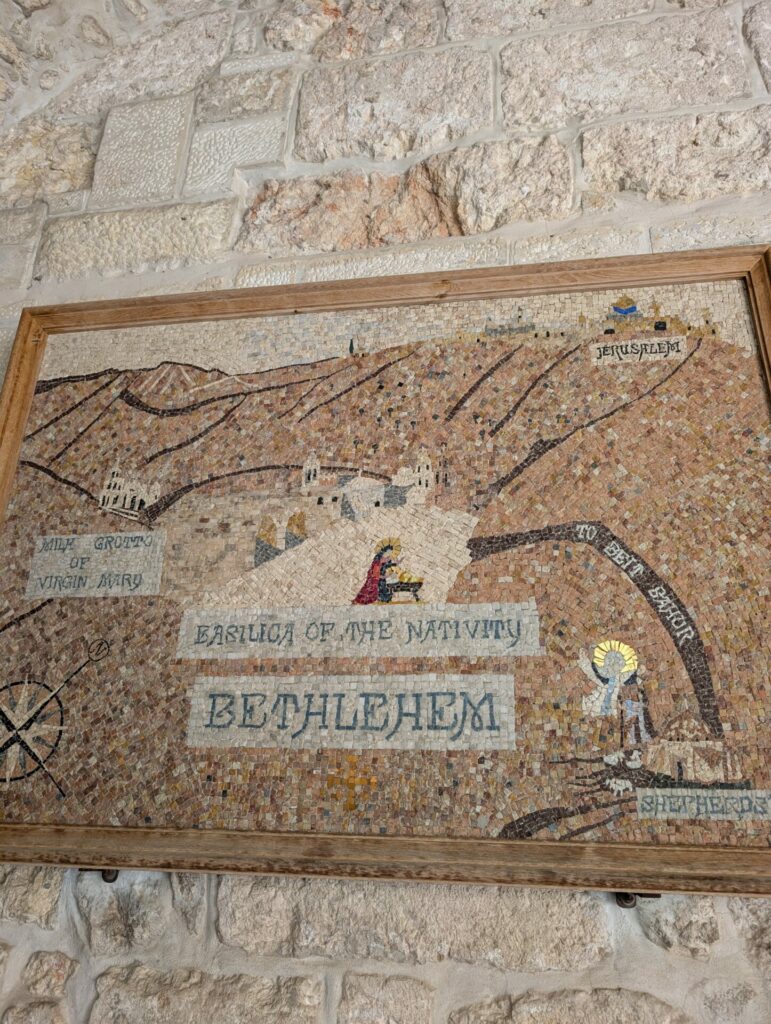
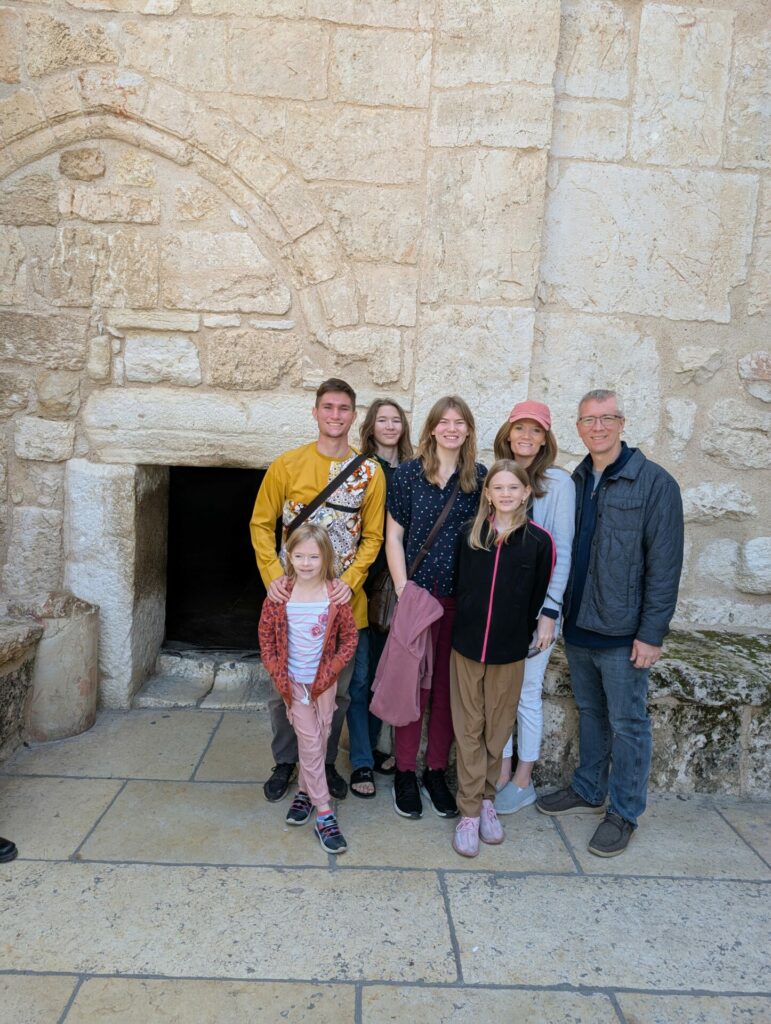
We were quite pleased with the simple, traditional falafel and shawarma in Israel, and the promenade was a great place to enjoy a beautiful spring lunch.
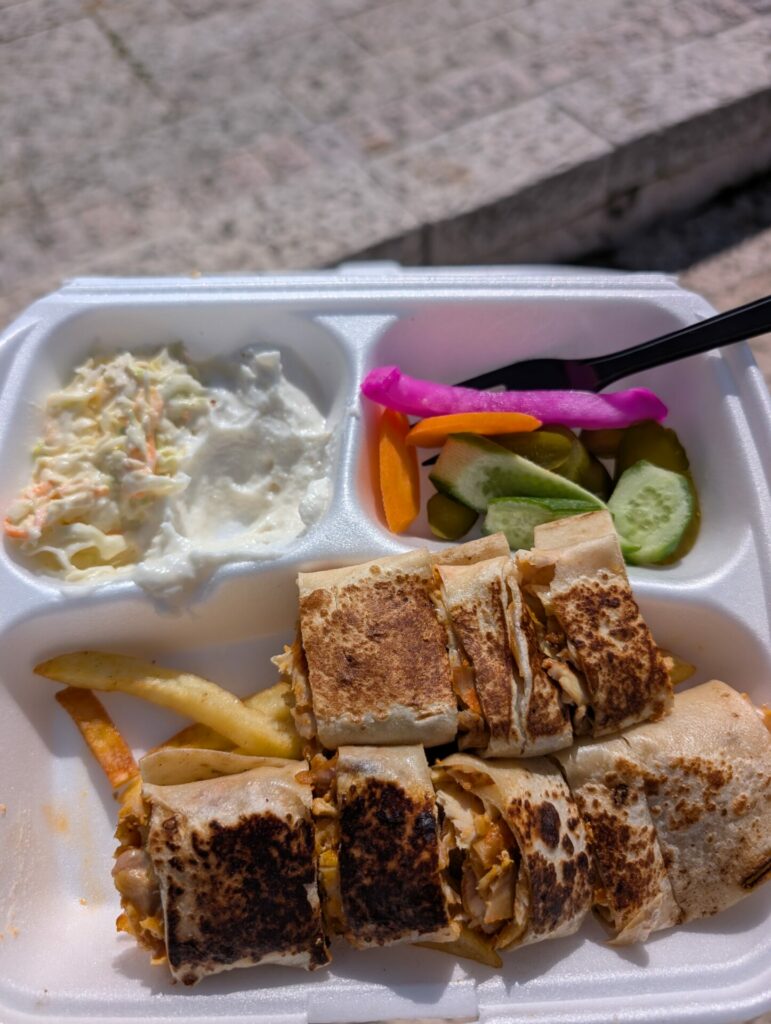

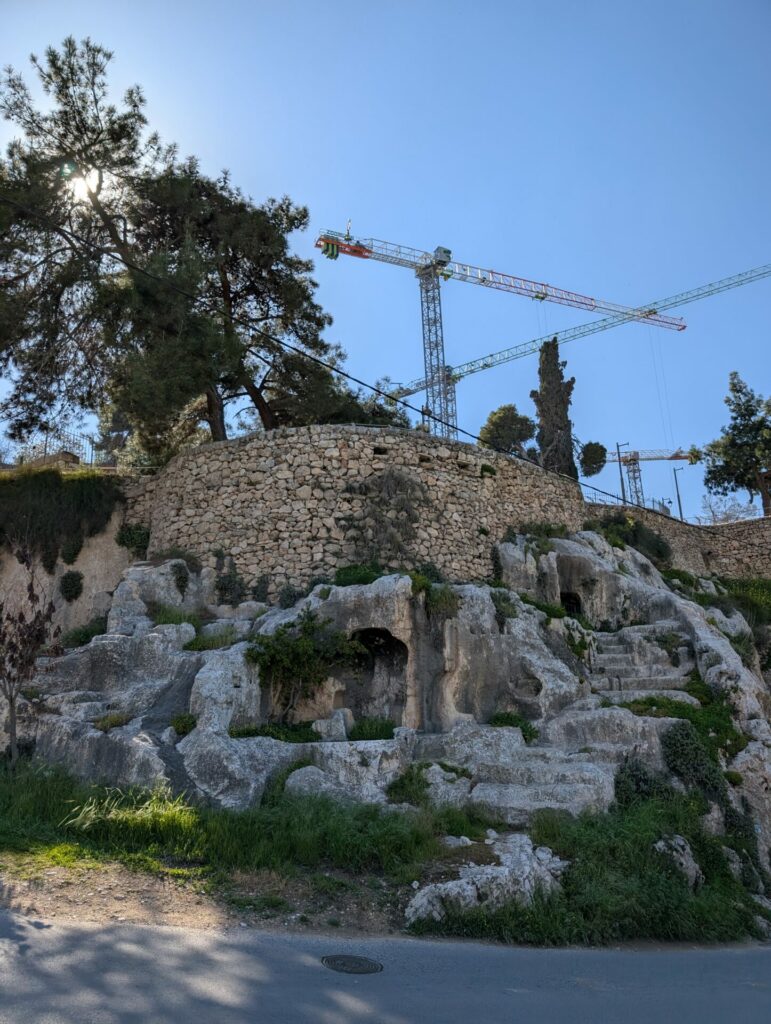
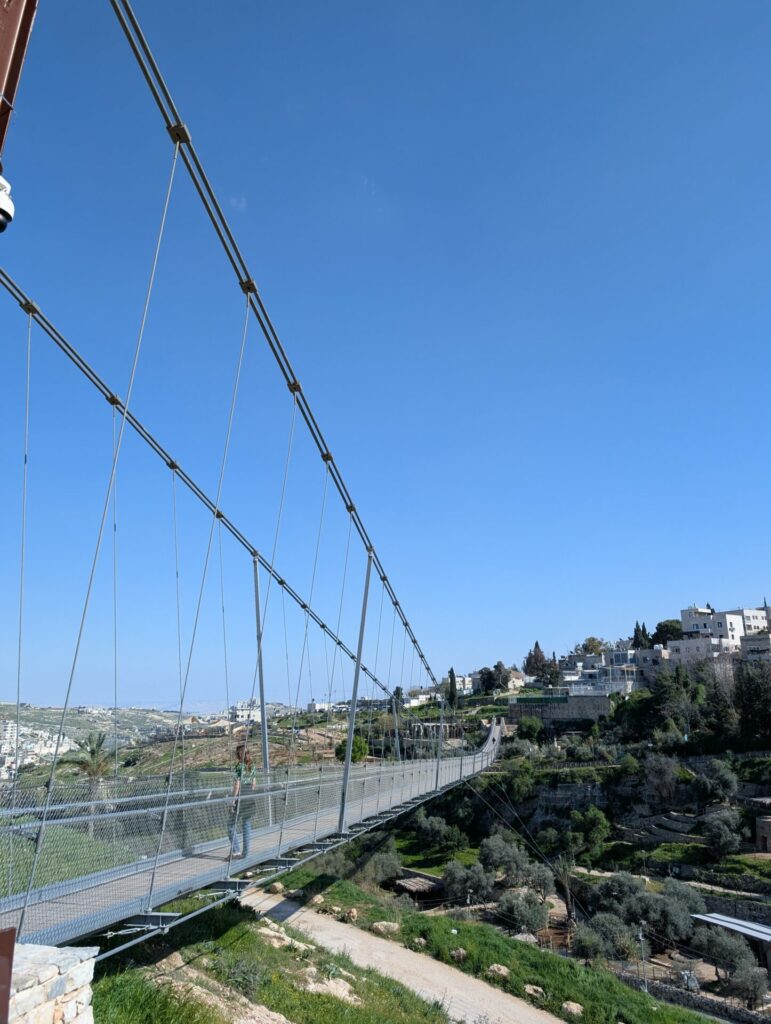
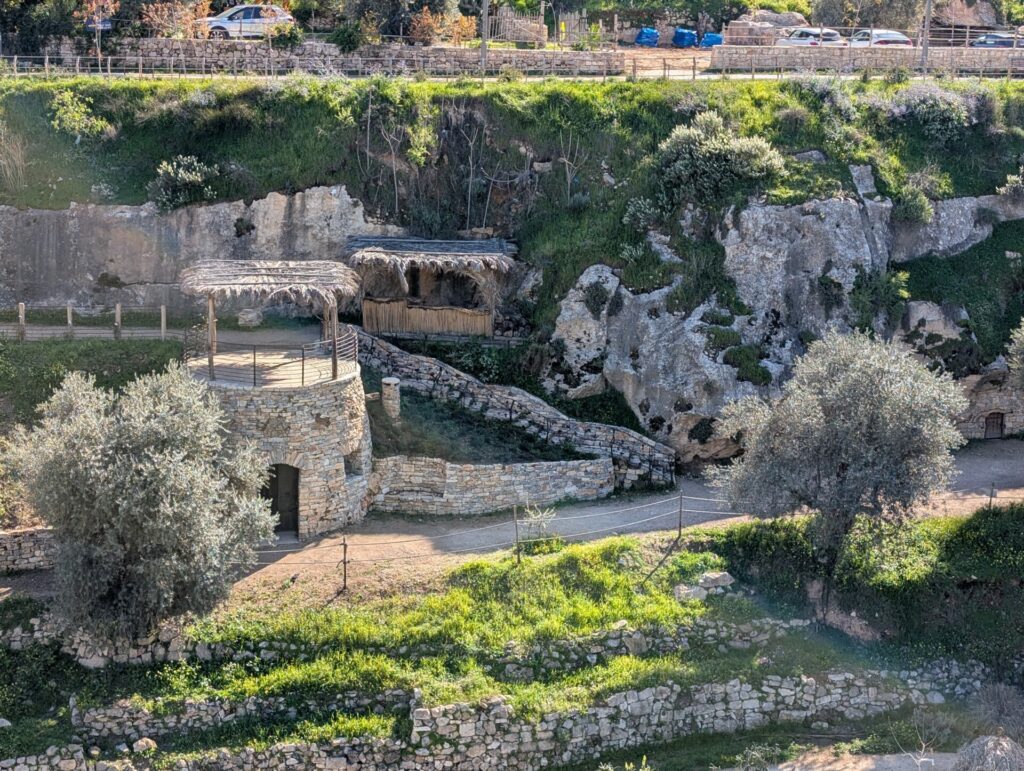
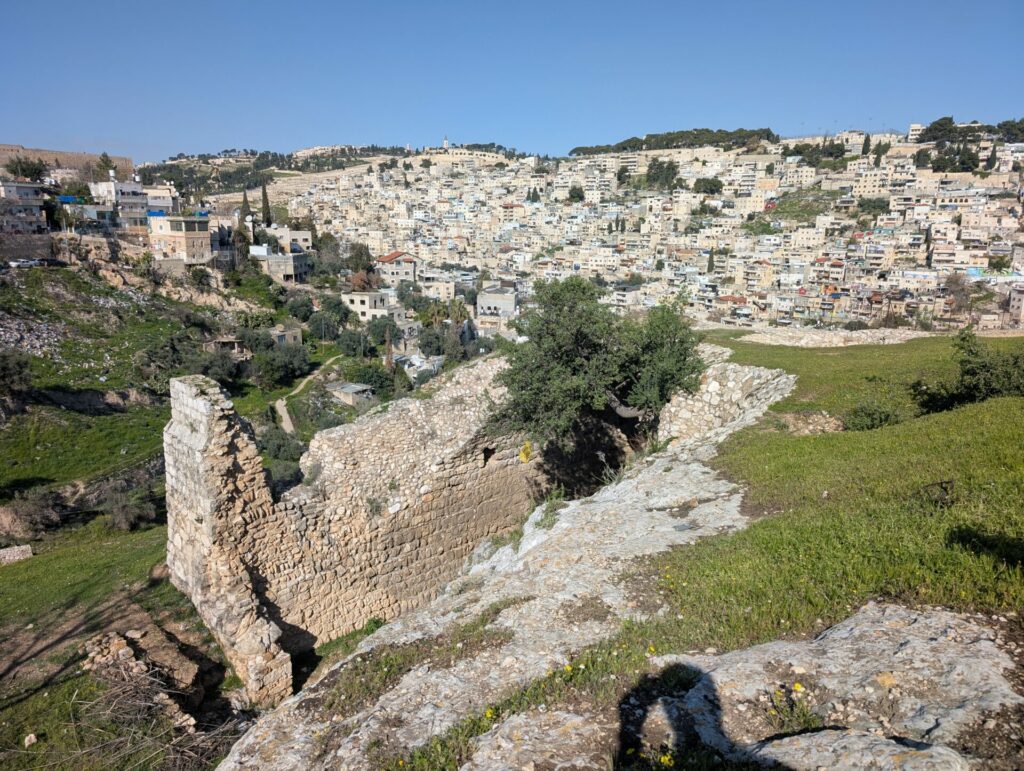
Day 4: Jaffa (Joppa), St Peter’s Church, Caesarea National Park
Today we followed the journey of Peter, beginning at the traditional site in Joppa (modern-day Jaffa), where he received a vision to preach to the Gentiles. From there, we traveled north to Caesarea, where he visited the home of Cornelius—a Roman centurion—proclaiming the gospel and witnessing the Holy Spirit poured out upon his household.
Learning a little about Herod was quite fascinating. To historians, he’s “Herod the Great”, remembered as a master builder—responsible for architectural wonders that still impress today. But for Christians, he’s “Herod the Wicked”—the paranoid king who ordered the slaughter of innocent children in an attempt to kill the newborn Jesus, and who executed several of his own sons and one of his wives for fear they were plotting against him. Like many of today’s popular figures, and perhaps often our own life, there are multiple sides to every story.
For sure though, Herod picked a gorgeous location for a palace and 40 acre completely man-made harbor!
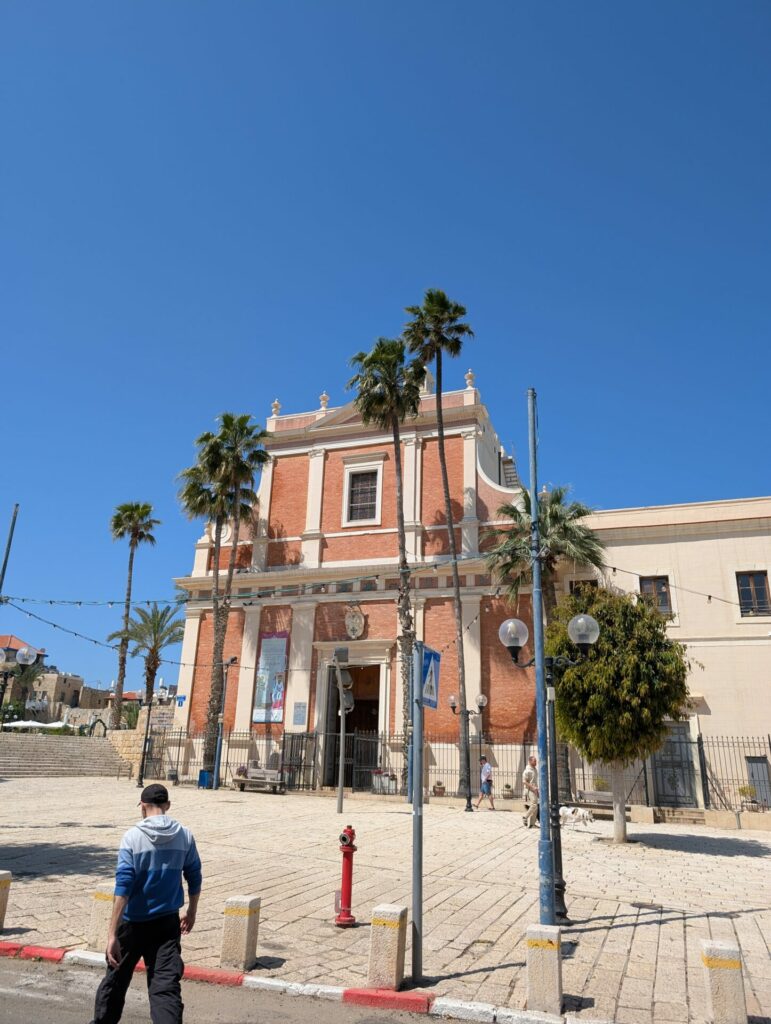
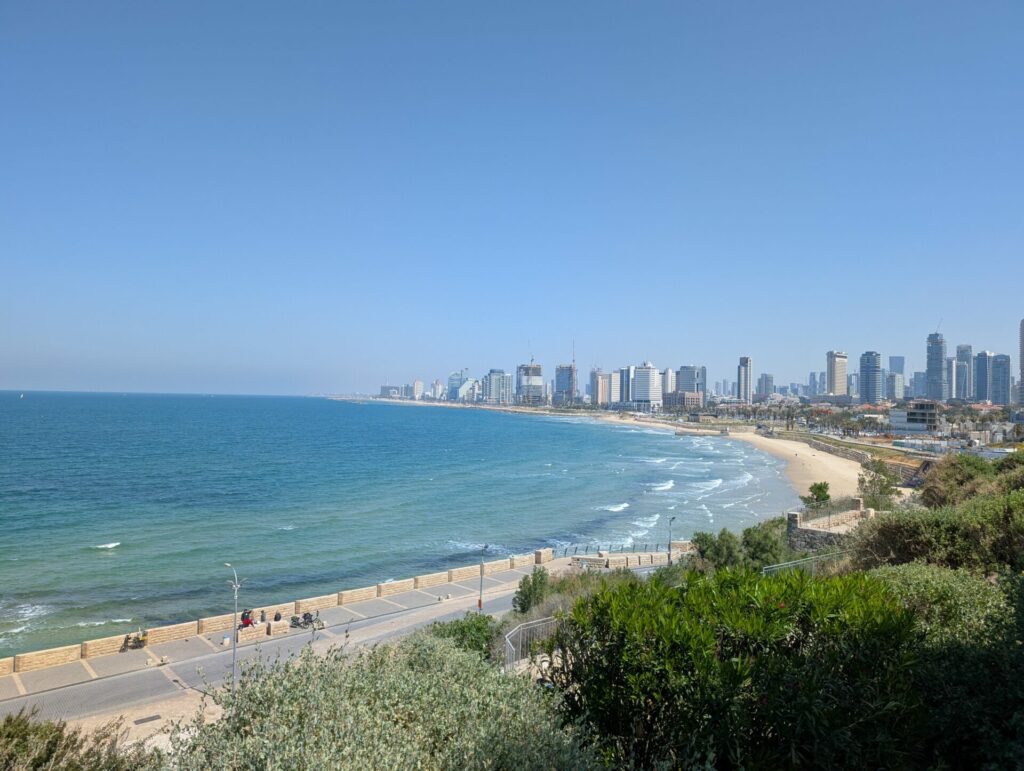
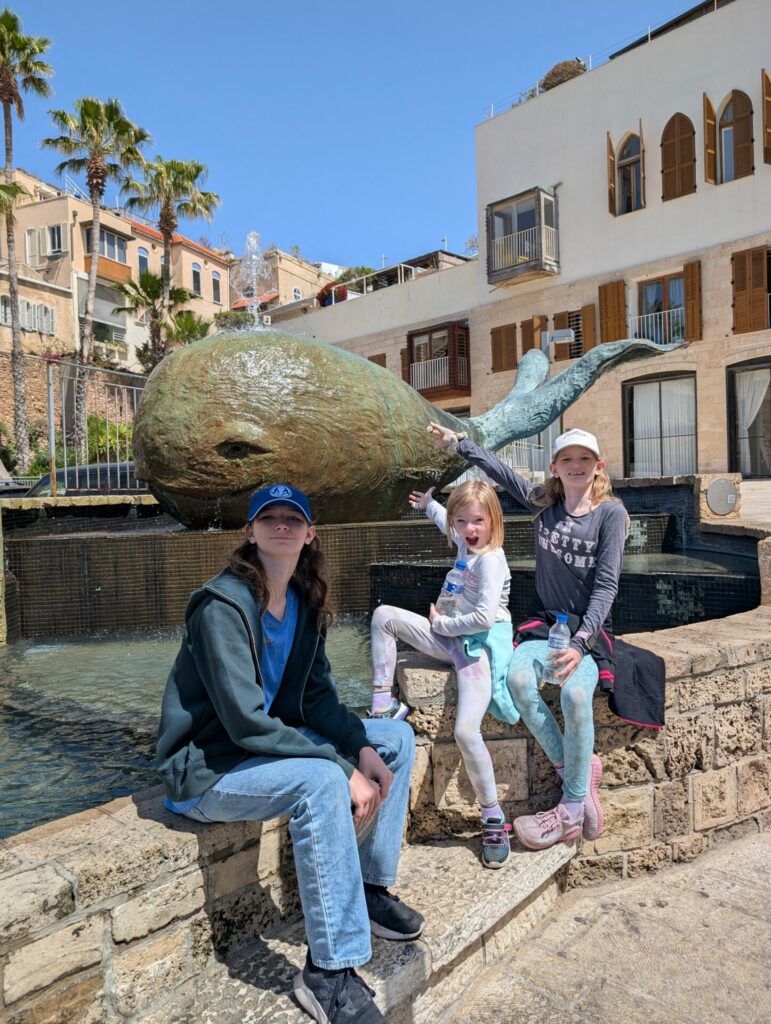
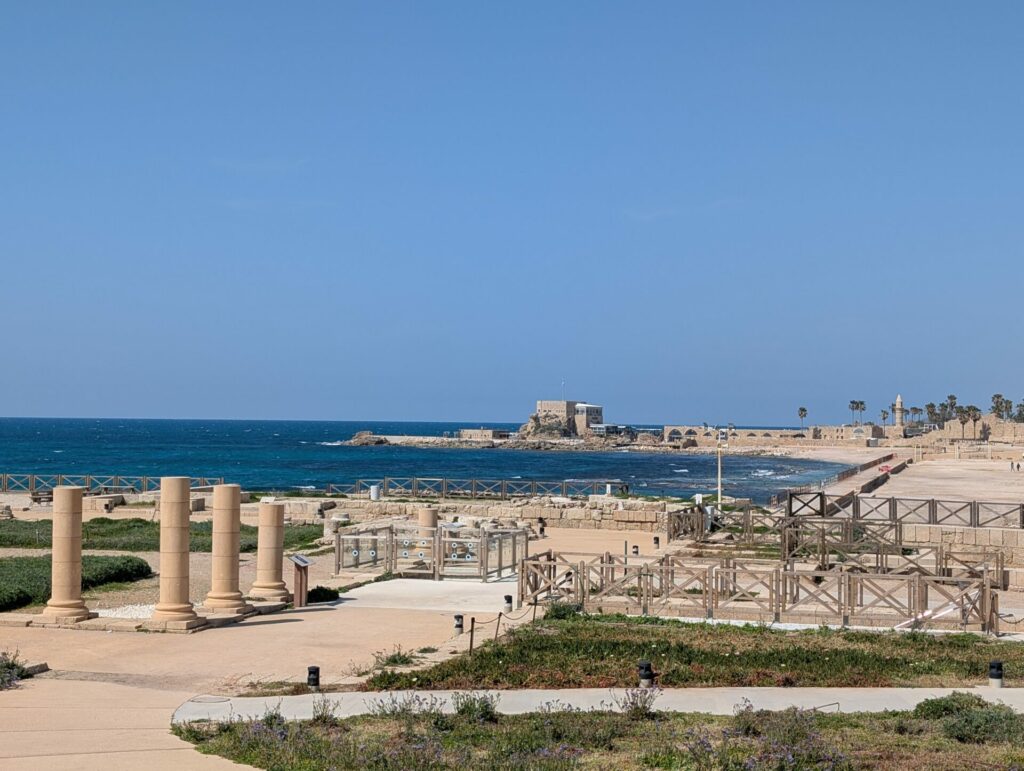
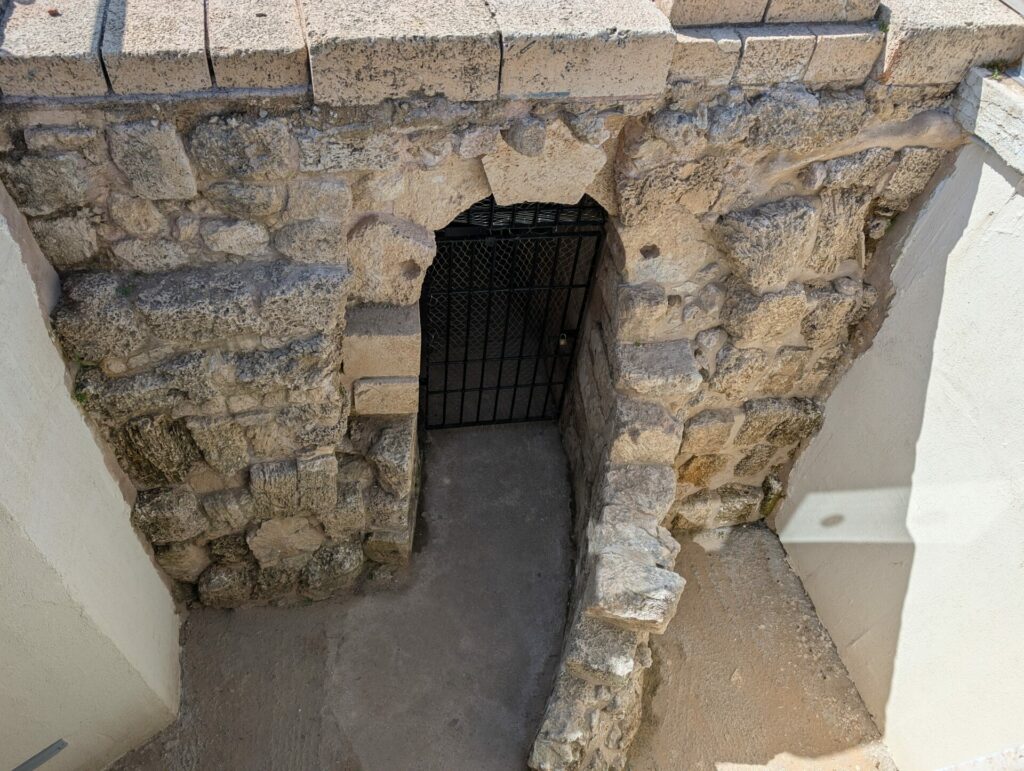
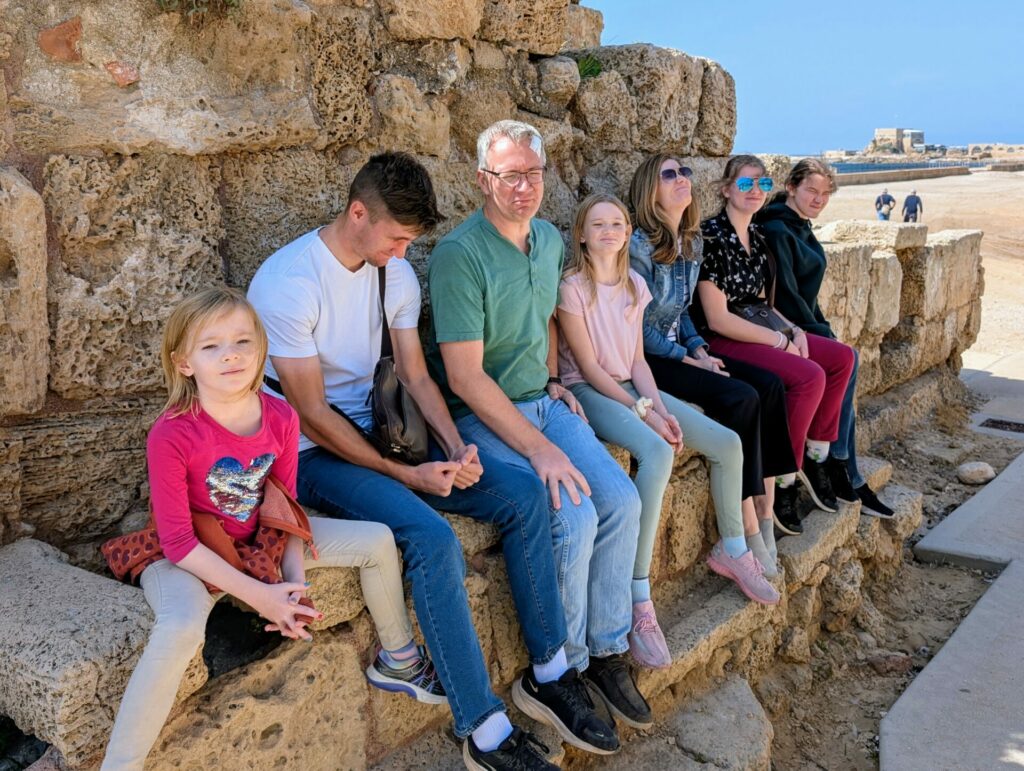

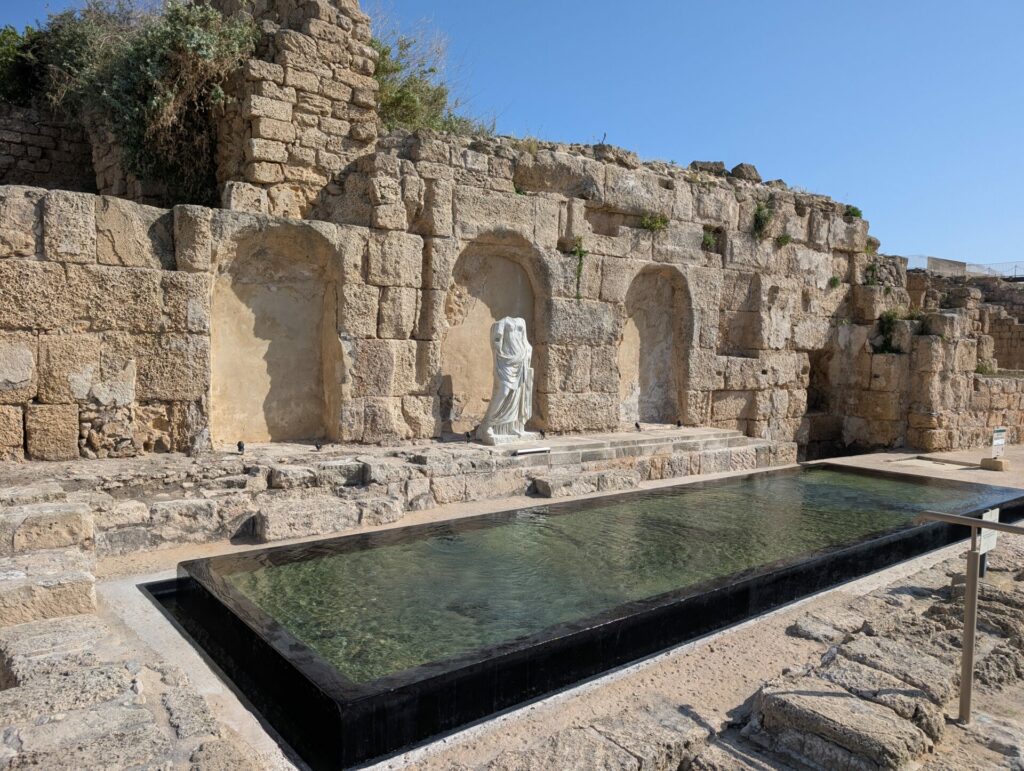
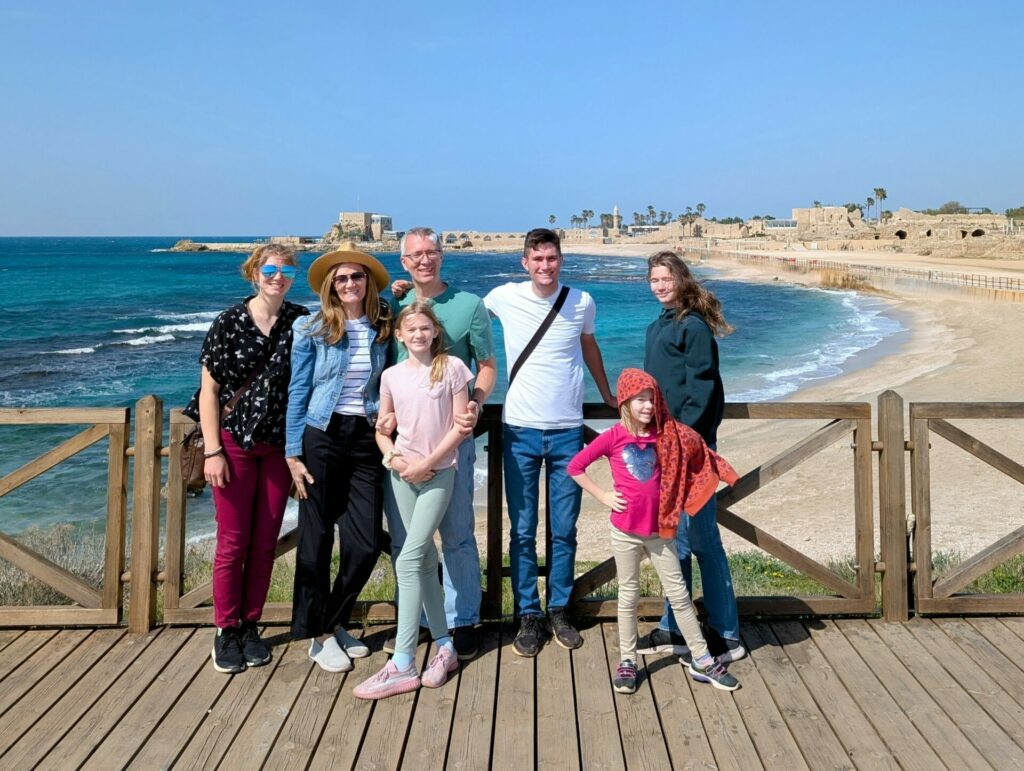
Day 5: Good Samaritan, Jordan River, Jericho, Dead Sea
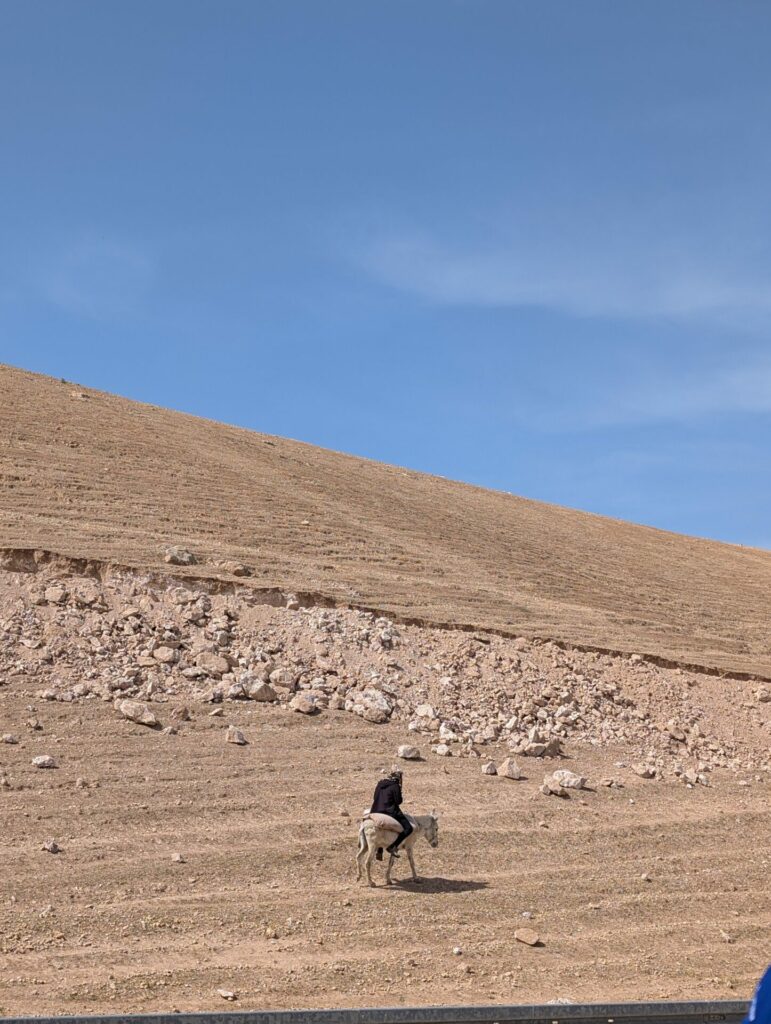

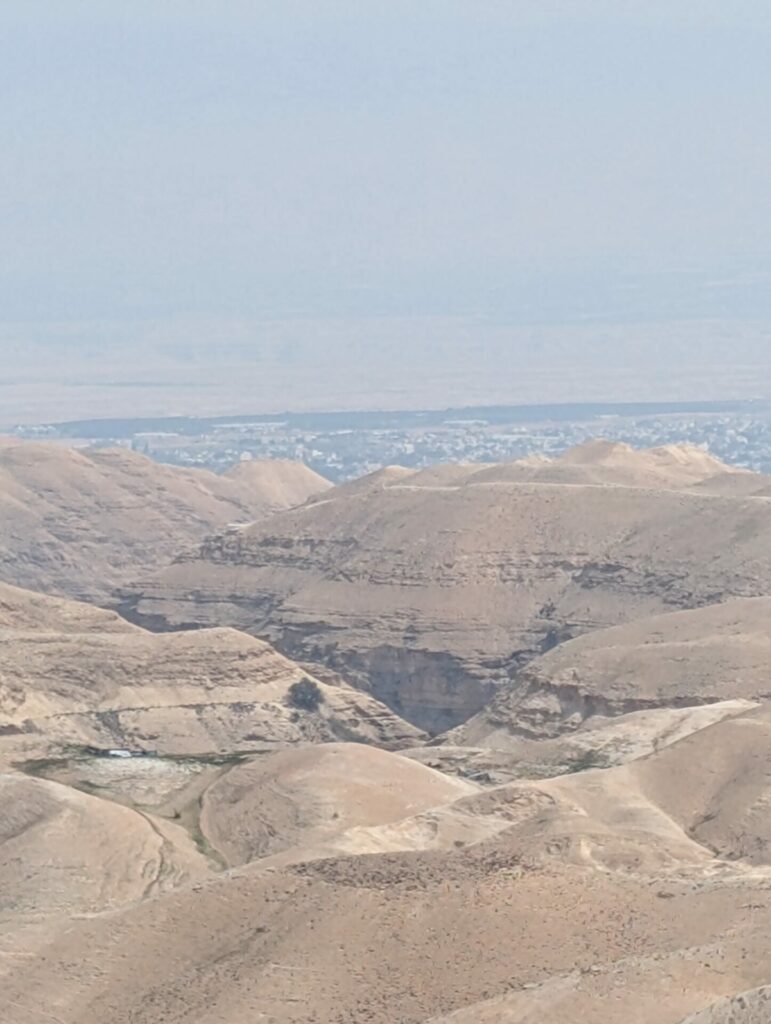
the Valley of the Shadow of Death
After a beautiful drive, stopping at a couple sites and viewpoints, we visited the place on the Jordan river where Christ was baptized. Then we were treated to a fabulous feast in Jericho.
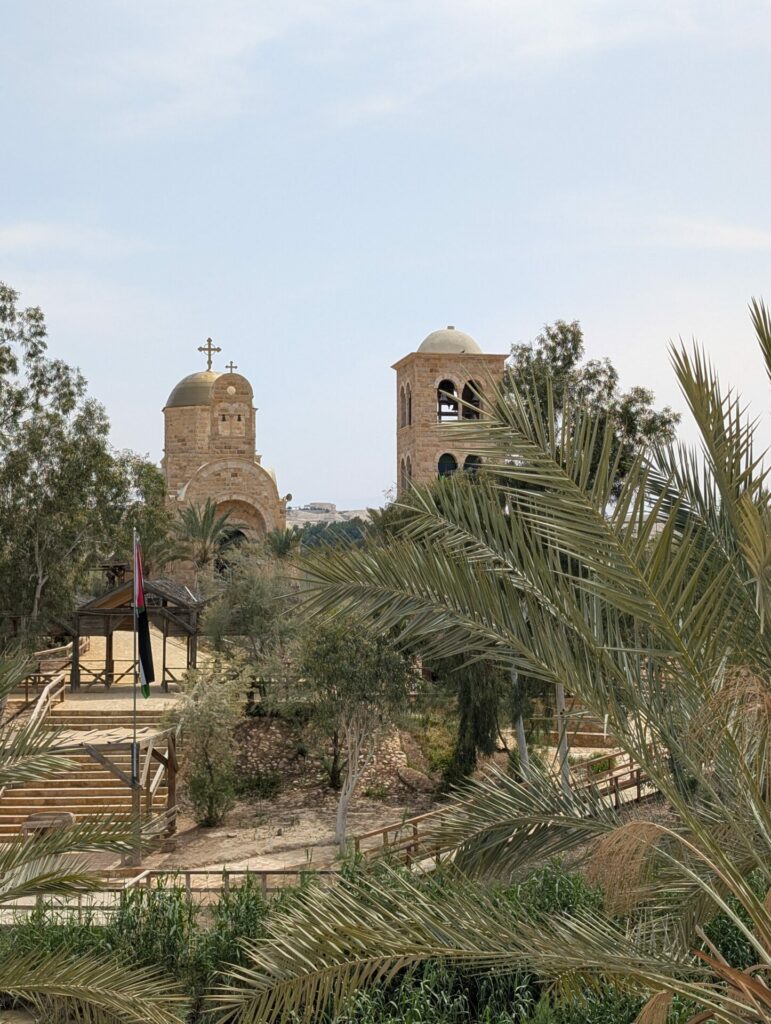
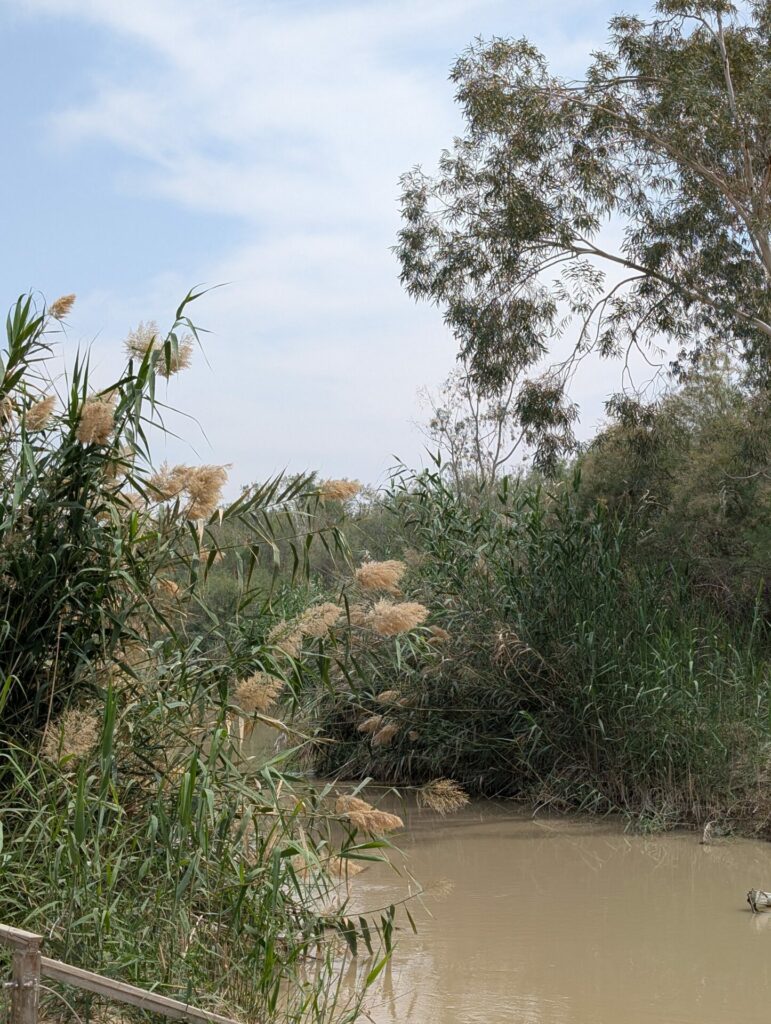


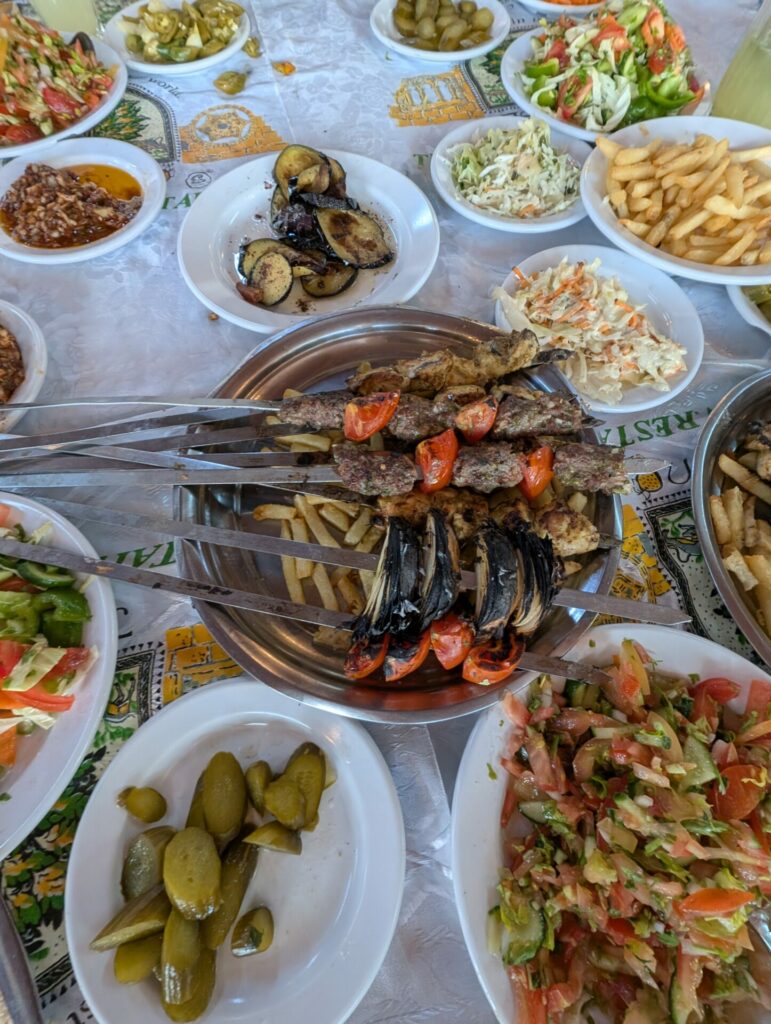

The Dead Sea is quite an experience! You can’t sink if you try. We all enjoyed walking out until we couldn’t touch the ground any more. You then just kind of stand there, floating upright. It’s pretty cool!

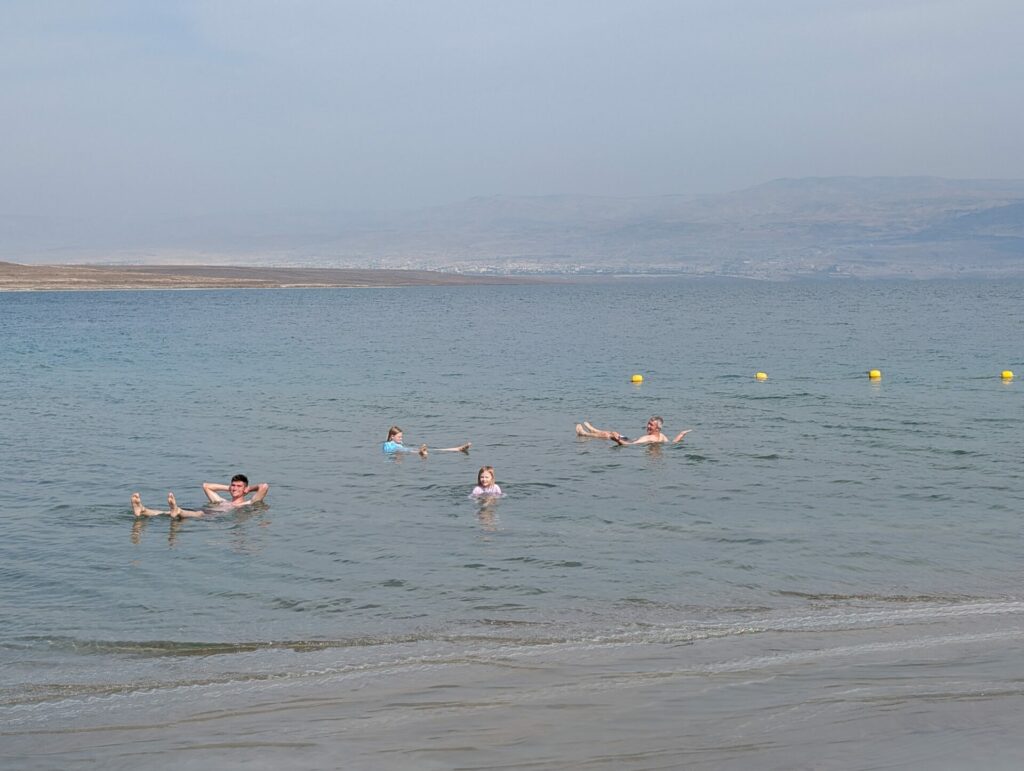
Day 6: Nazareth, Mount Precipice, Mount of Beatitudes, Loaves & Fishes Church, Sea of Galilee, Capernaum
In stark contrast to the previous desert day, a 2-3 hour drive to the Galilee area revealed rolling hills of lush green. This is where it all started – Christ’s home town, and the towns he spent most of his ministry.
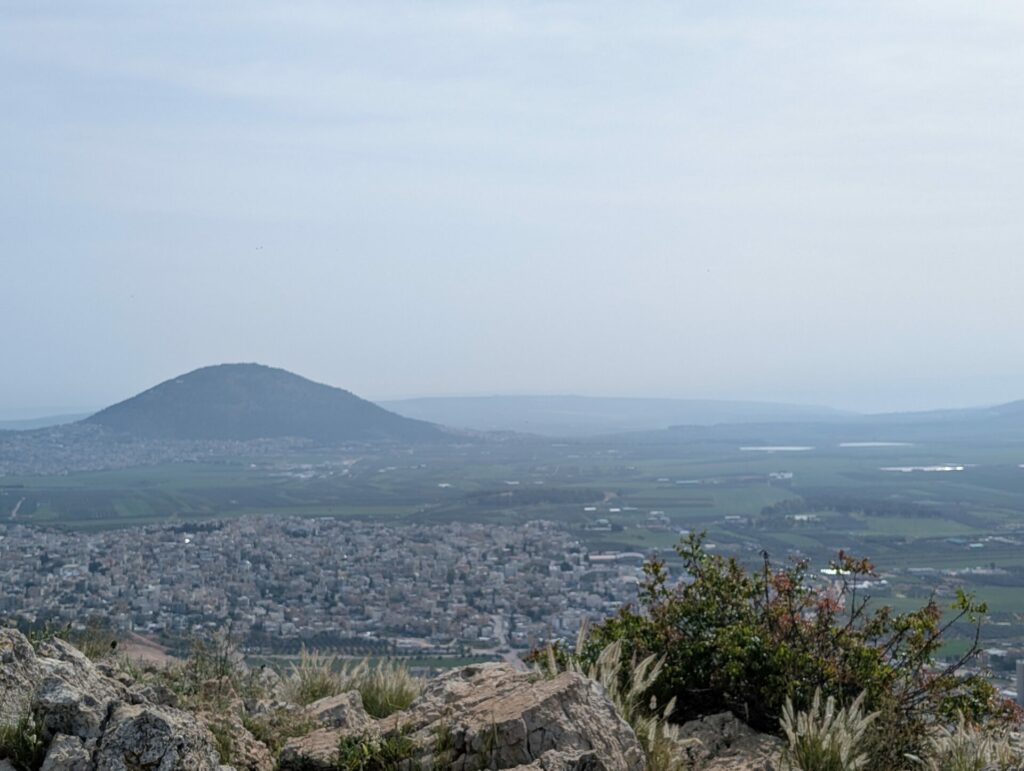

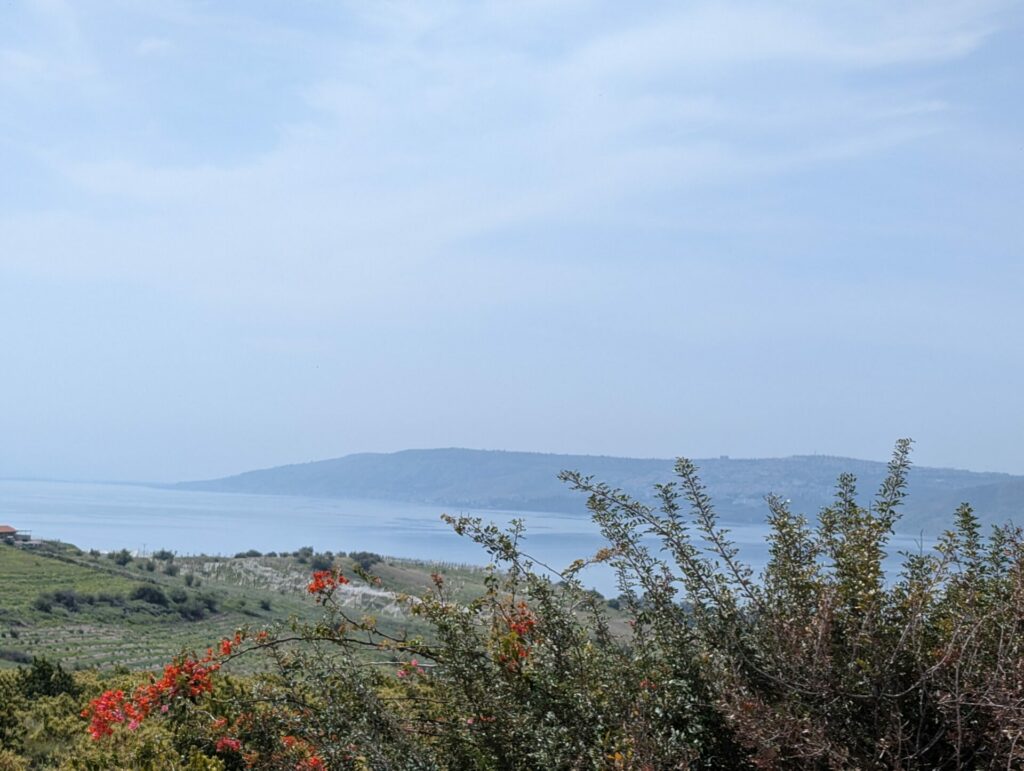


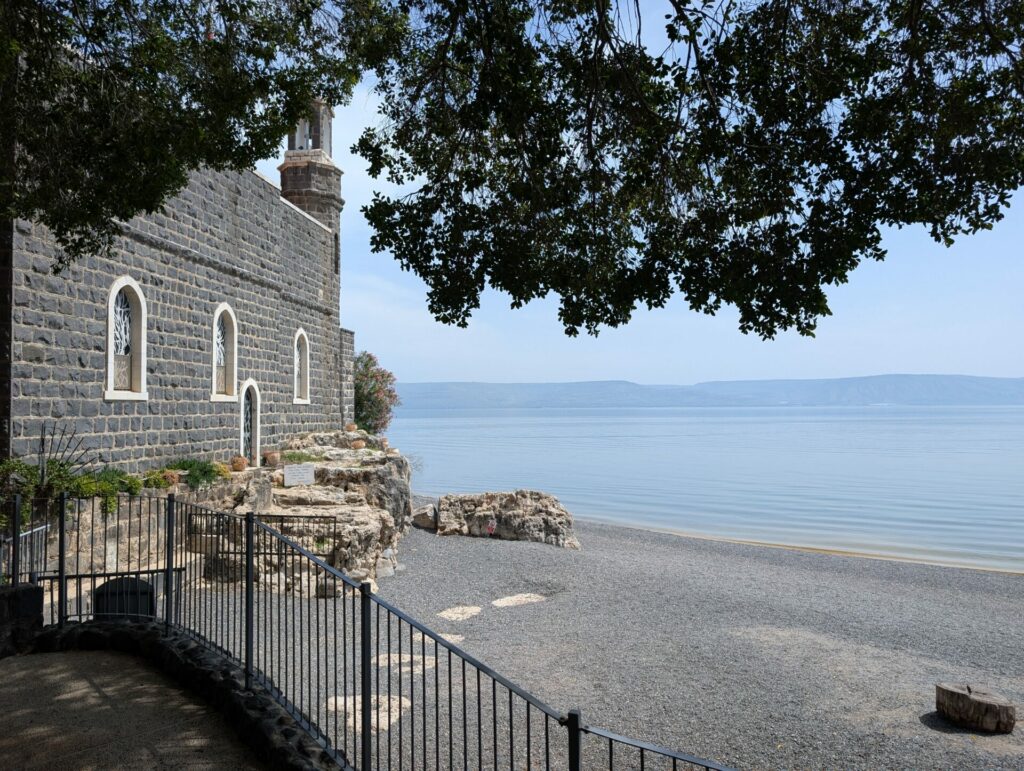



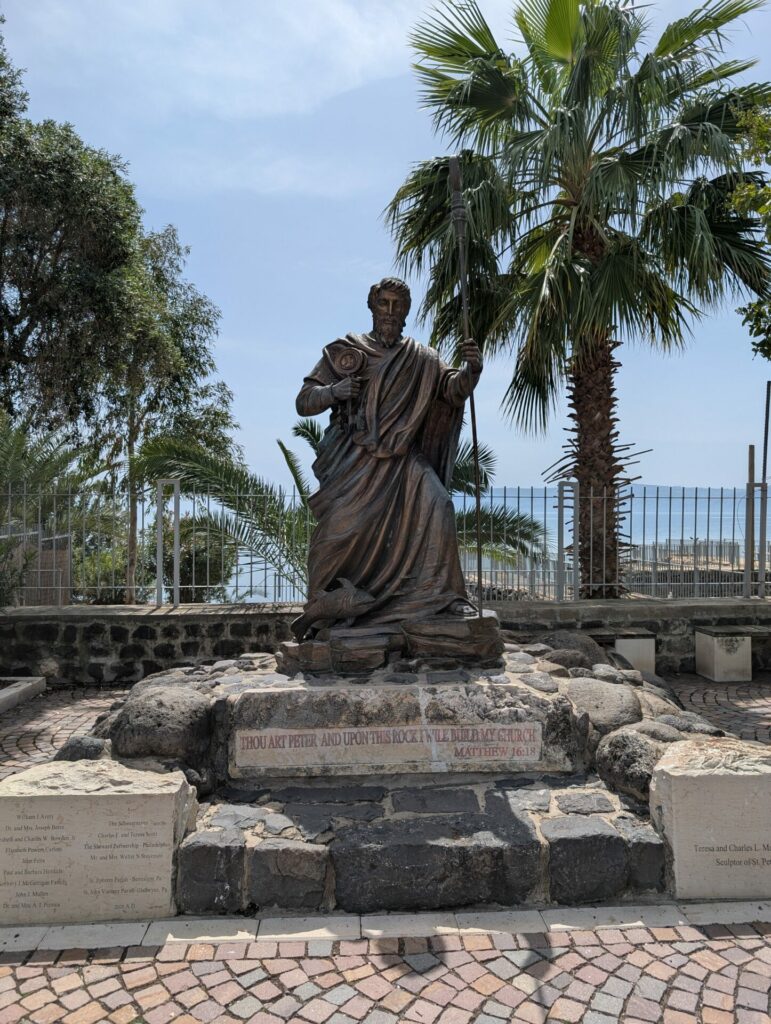

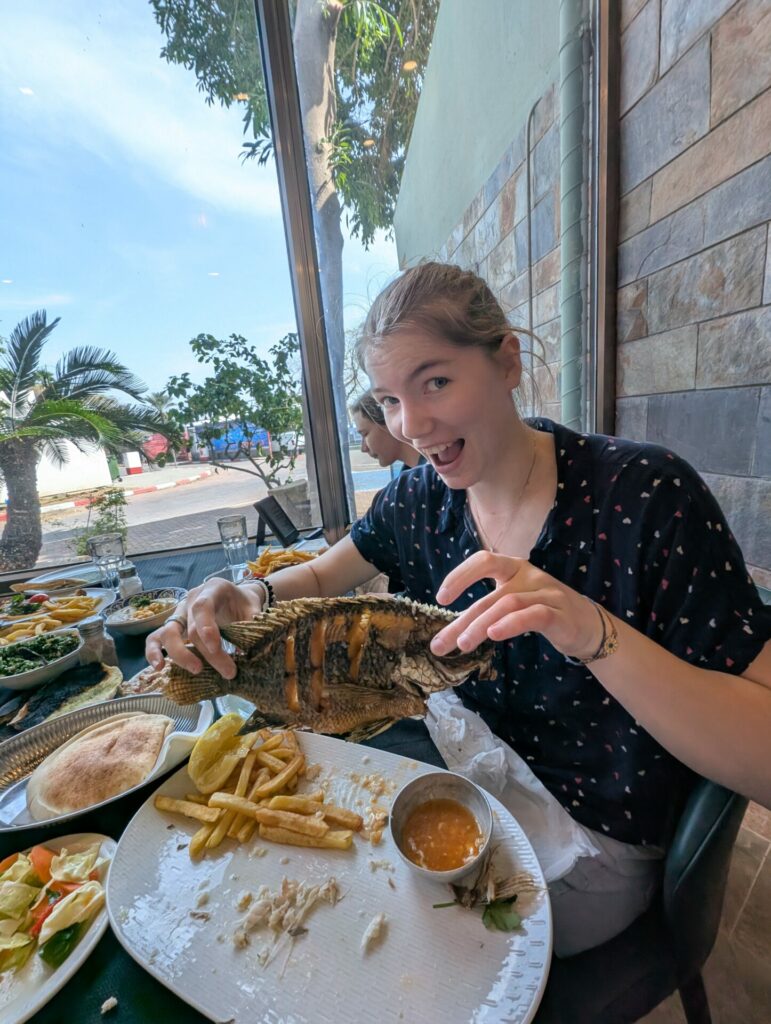
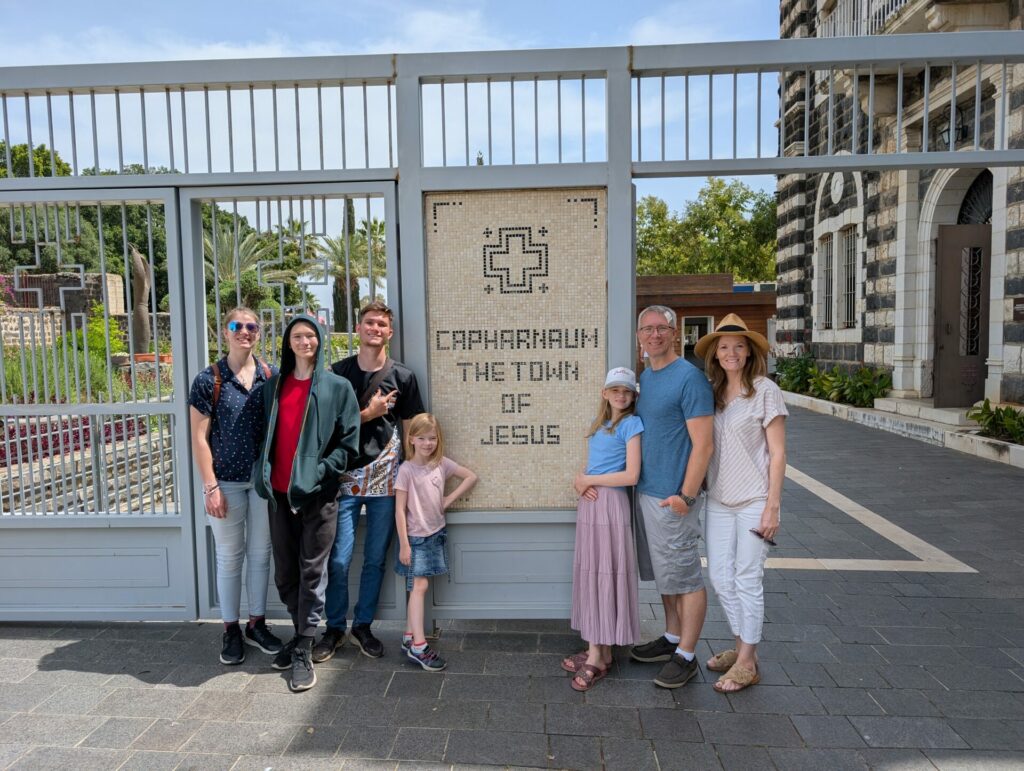
Day 7: Mary’s Spring, Church of the Visitation, Church of John the Baptist, Garden Tomb, St Anne’s Church, Pool of Bethesda
These first several sites commemorate where Mary was visited by the angel to learn of Jesus’s birth, her aunt Elizabeth’s home, etc.
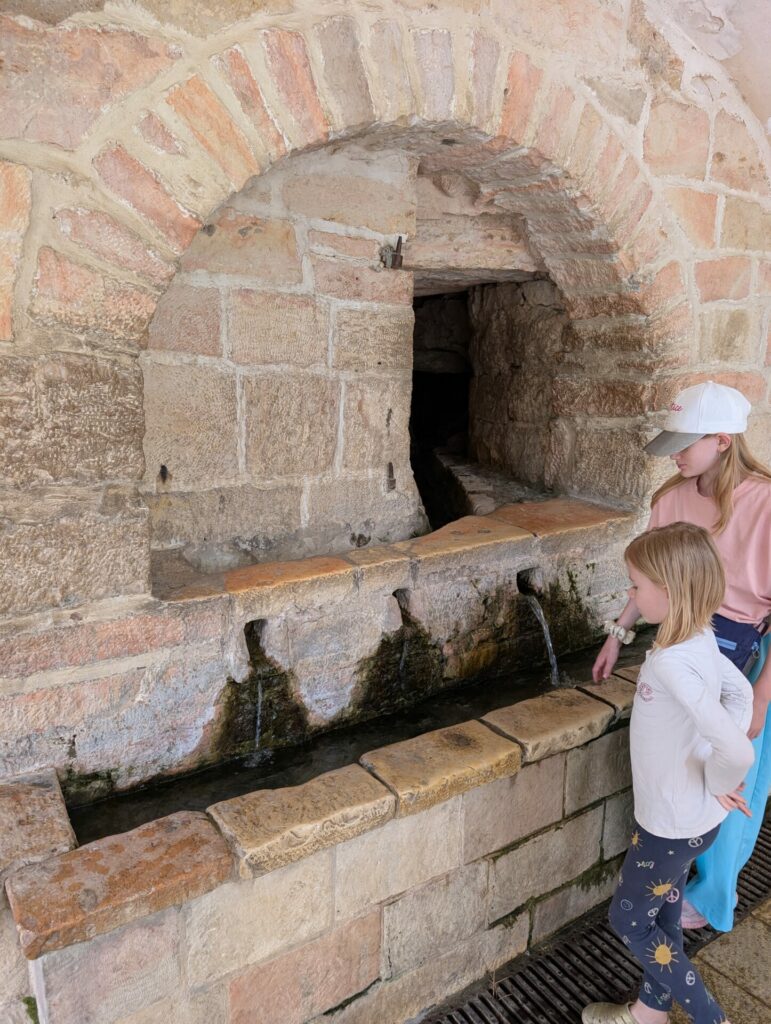
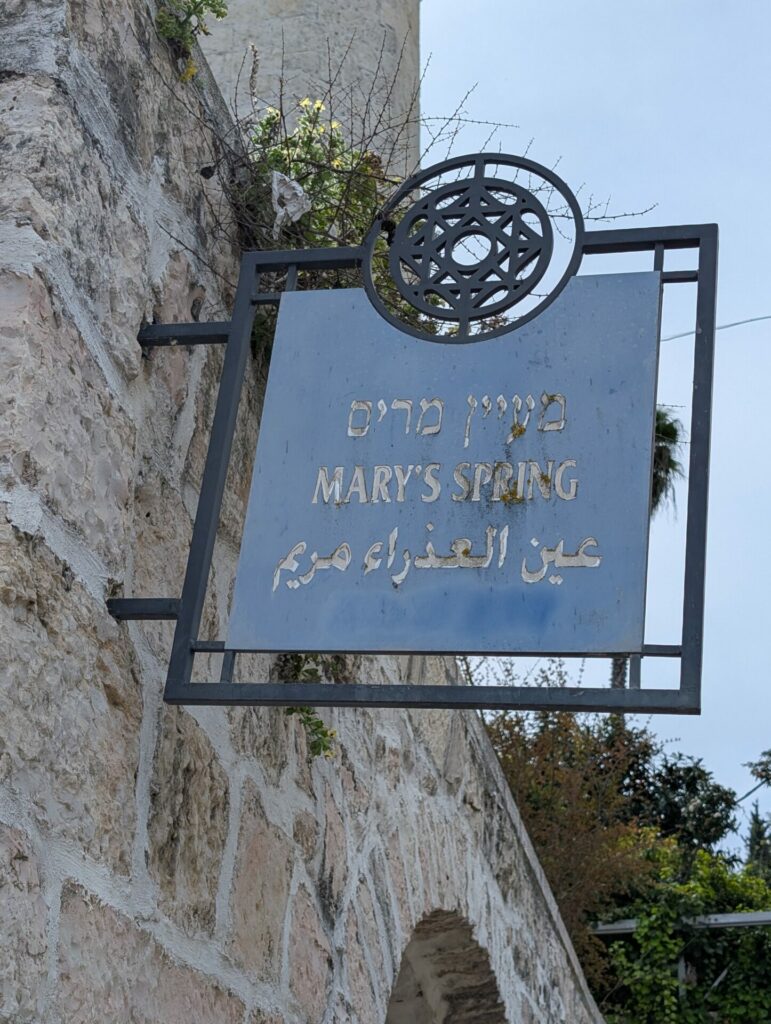
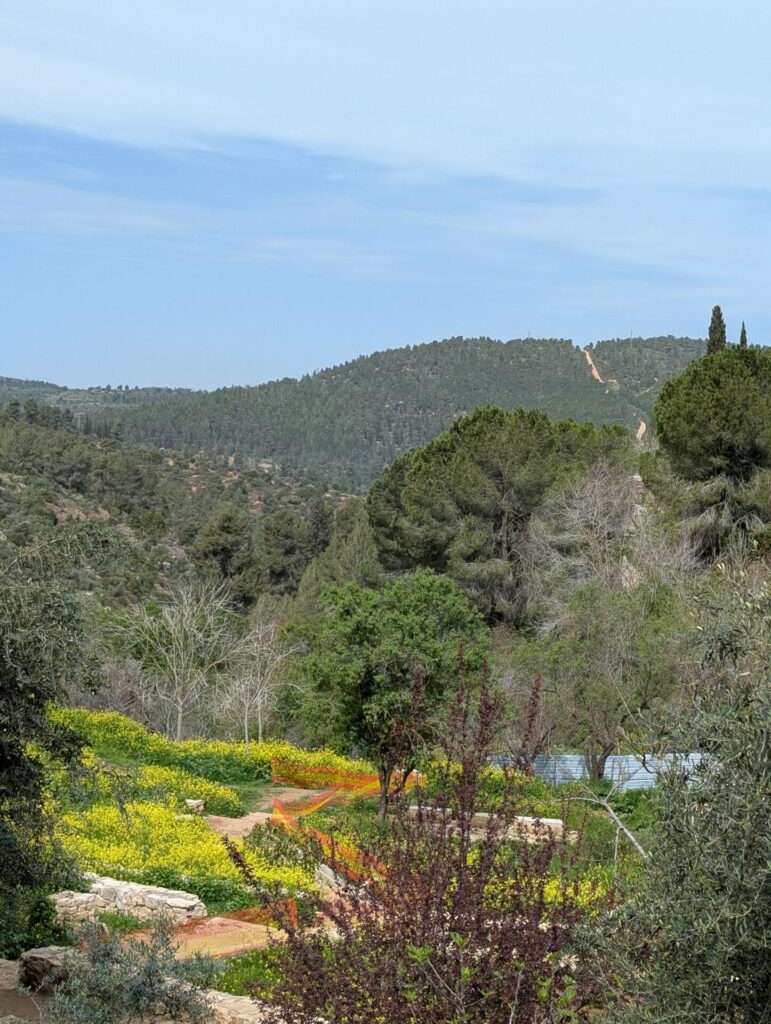

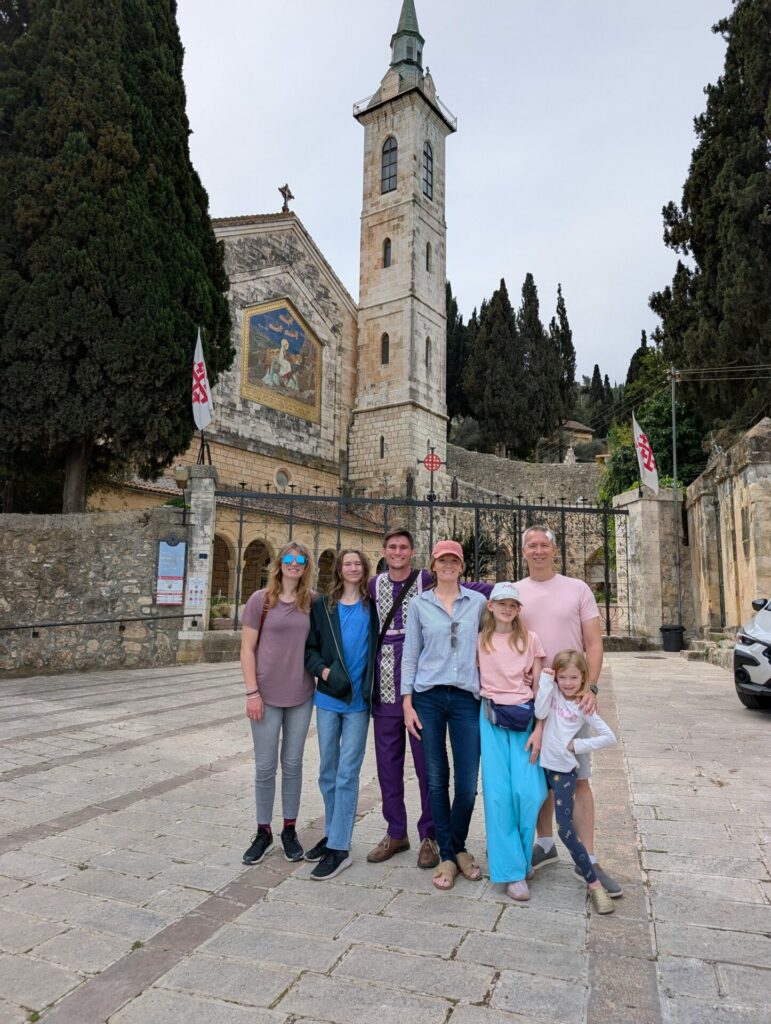
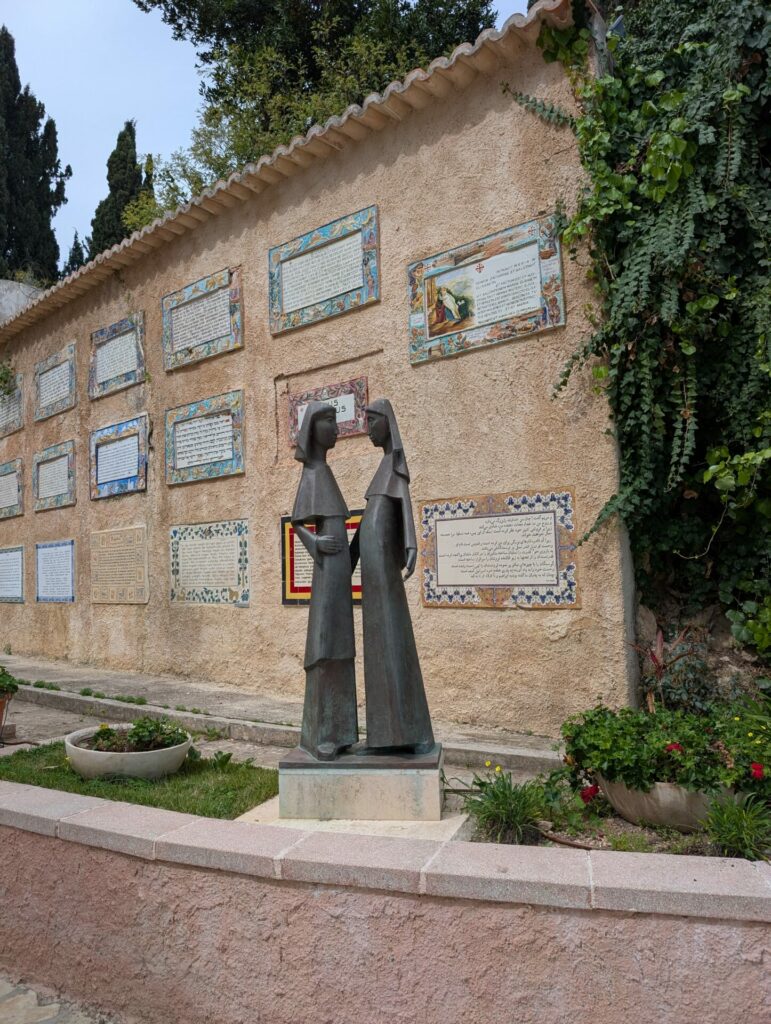



There are two main sites believed to be the tomb where Christ’s body was lain. Today we visited one – the Garden Tomb – preserved in a more natural state and presented quite reverently. We sang a hymn together inside the tomb, enjoying the moment of reflection and awe.
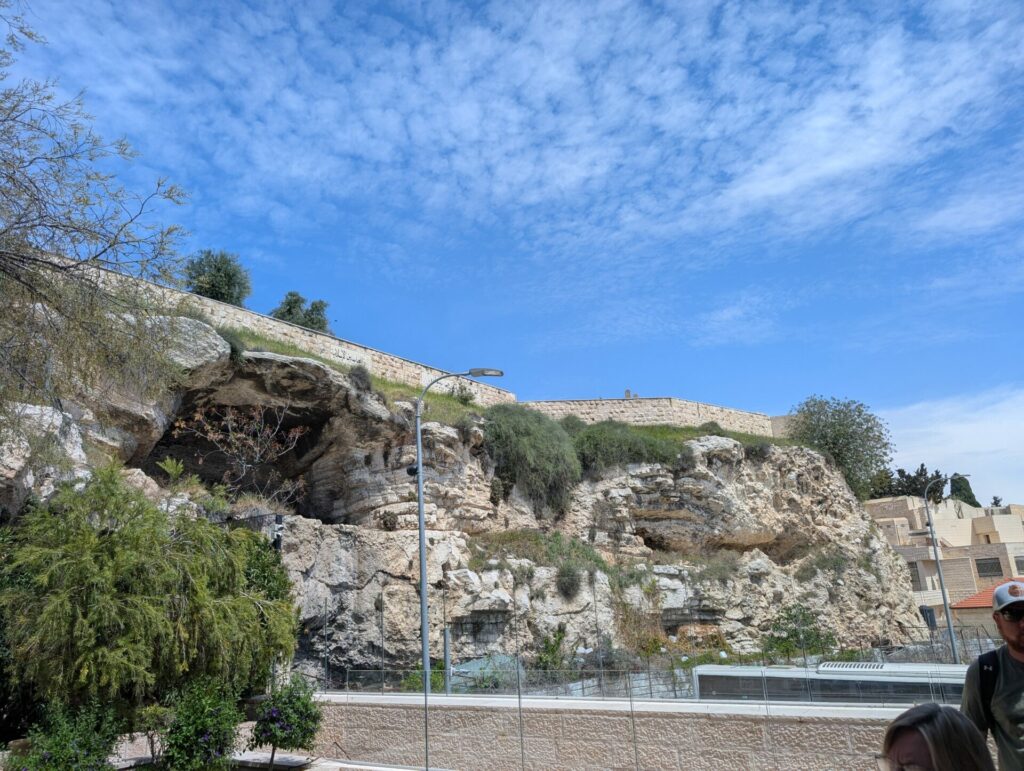
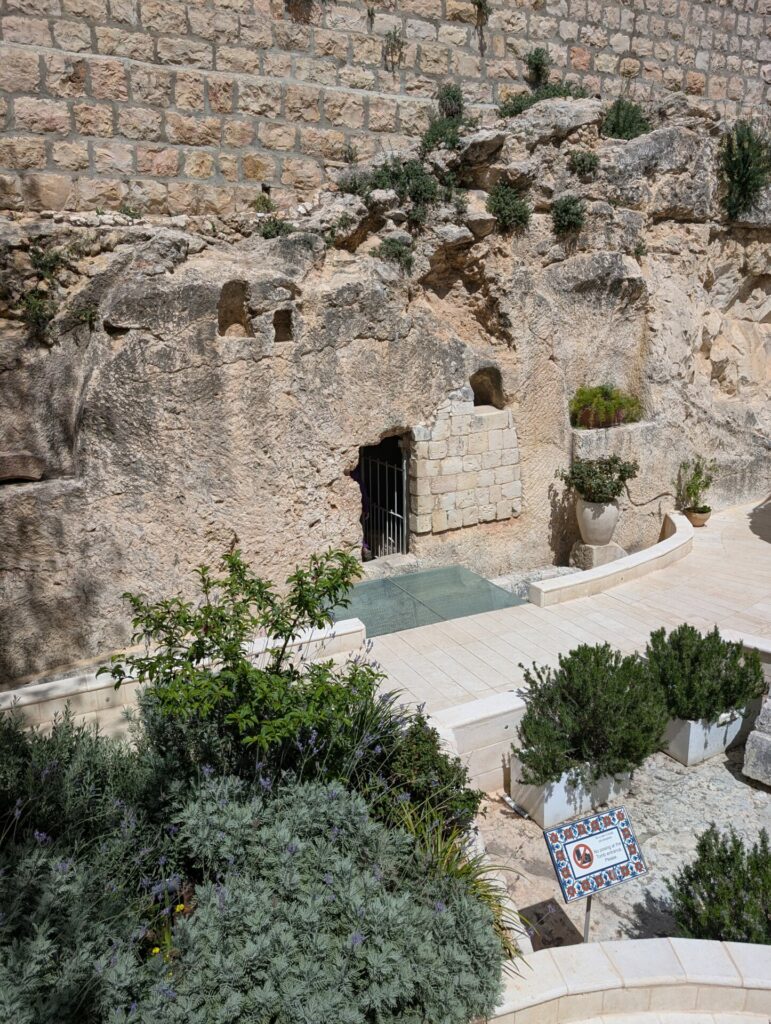
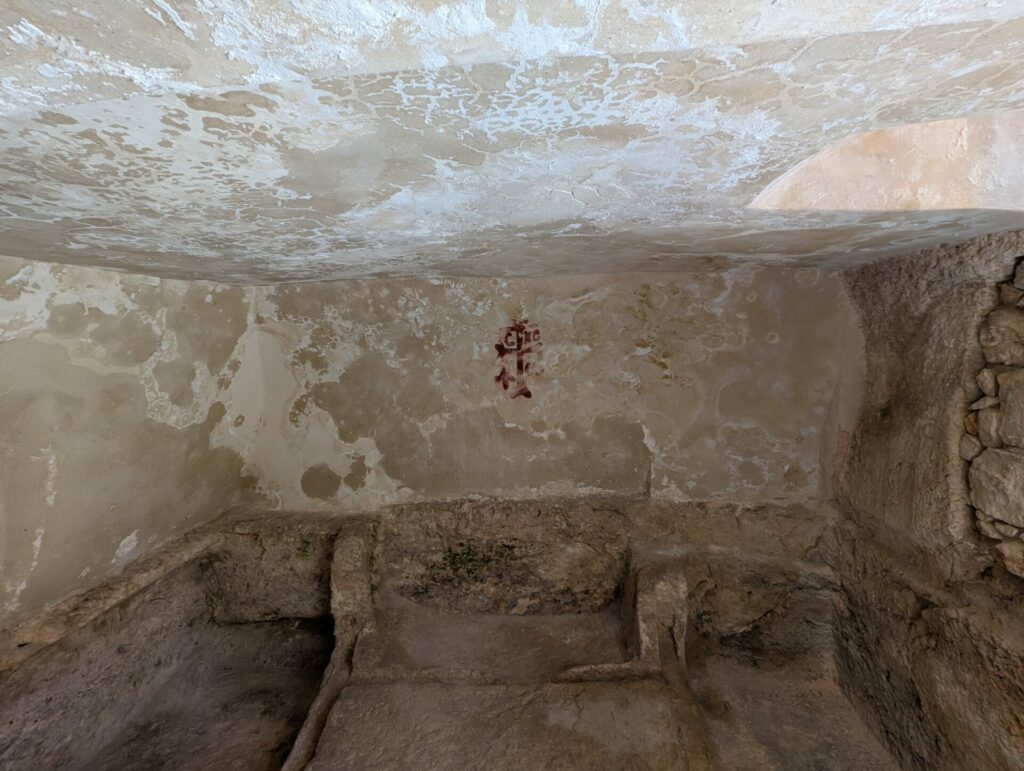

The kids described the site where the Pool of Bethesda is excavated as “this looks like an epic video game!”
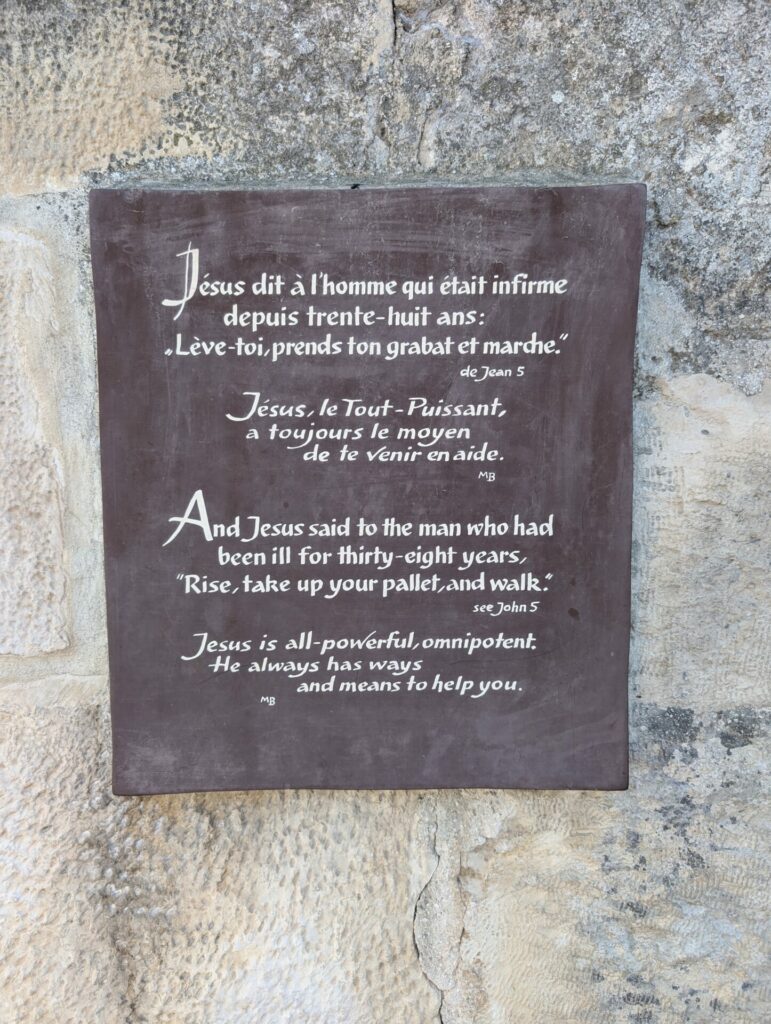




Day 8: Masada National Park, Qumran National Park (Dead Sea Scrolls)
Masada is this incredible fortress built by King Herod around 30 BCE. Perched high on a plateau overlooking the Dead Sea, it was designed as a palace retreat and stronghold in case of revolt. Later abandoned, a group of Jewish rebels—known as the Sicarii—took refuge there during the First Jewish-Roman War (66–73 CE) after fleeing the destruction of Jerusalem. After a months-long siege, the official story says that rather than face capture and enslavement, the defenders chose to die by their own hands. (Or maybe the Romans just didn’t want to admit to slaughtering every man, woman, and child.)
What really struck Phil wasn’t the famous last stand—it was the sheer engineering brilliance. This place is perched on top of an isolated rock plateau in the middle of the Judean Desert, yet Herod managed to build palaces, bathhouses, storerooms, heating and cooling systems, and even an elaborate system of cisterns to collect and store water—without any modern machinery. The fact that they could haul massive stones up cliffs, design buildings that lasted millennia, and channel desert rainwater into underground reservoirs is a wonder.
Whether it’s for the incredible view, the marvel of ancient engineering, or the debated-but-stirring history, this was a site worth visiting!
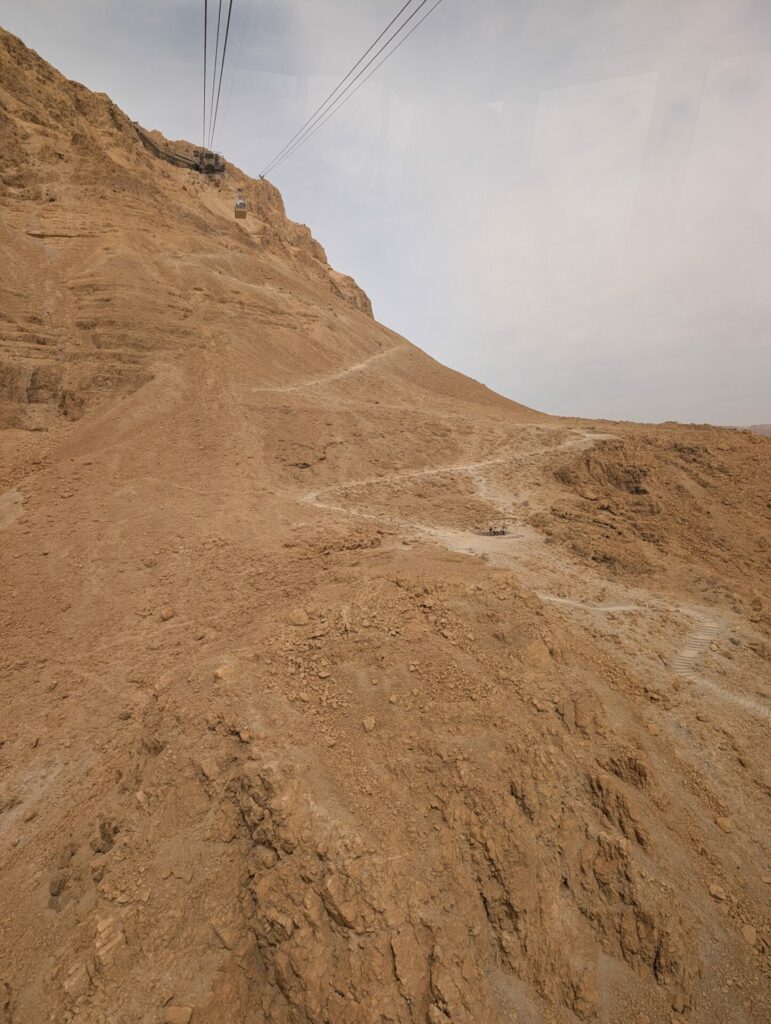
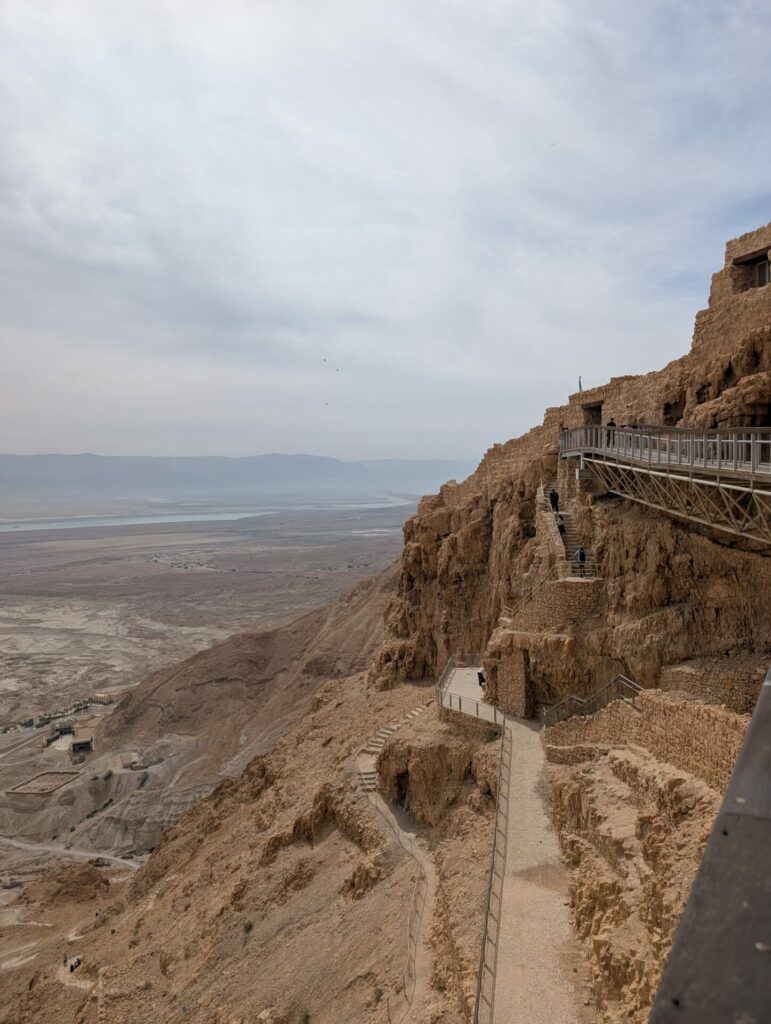
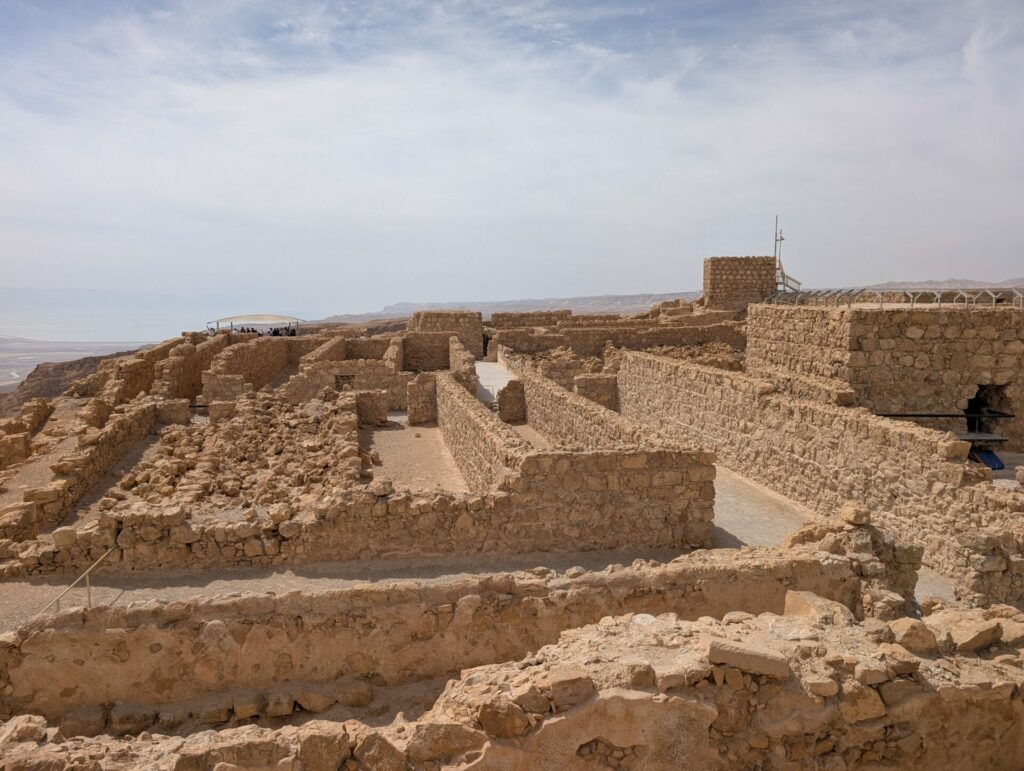
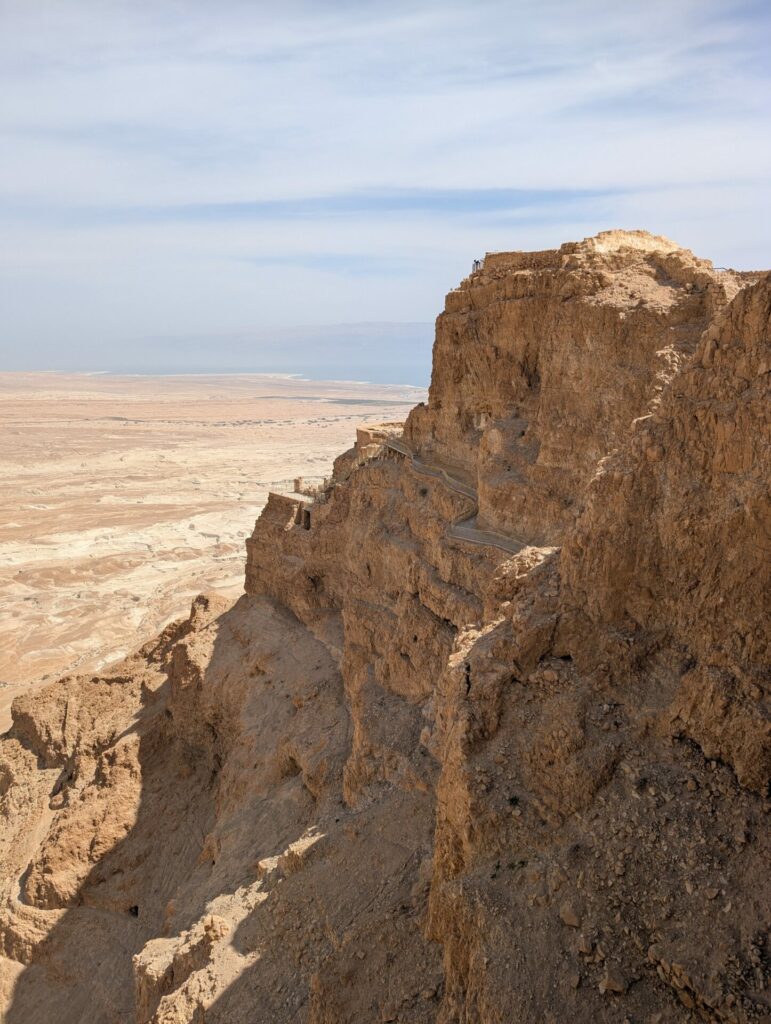
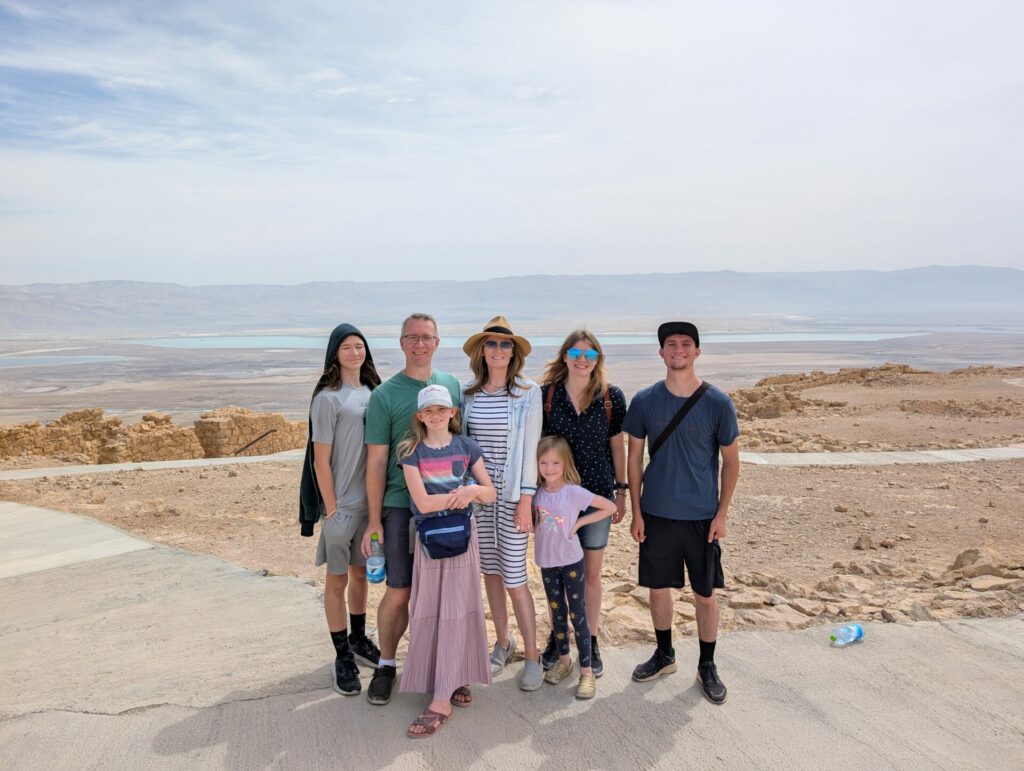
I had heard of the Dead Sea Scrolls, but never really thought about their significance, and how miraculous their preservation is. Or how unfortunate that the Bedouin shepherd who found the first sold to an antiquities dealer for a few British pounds.

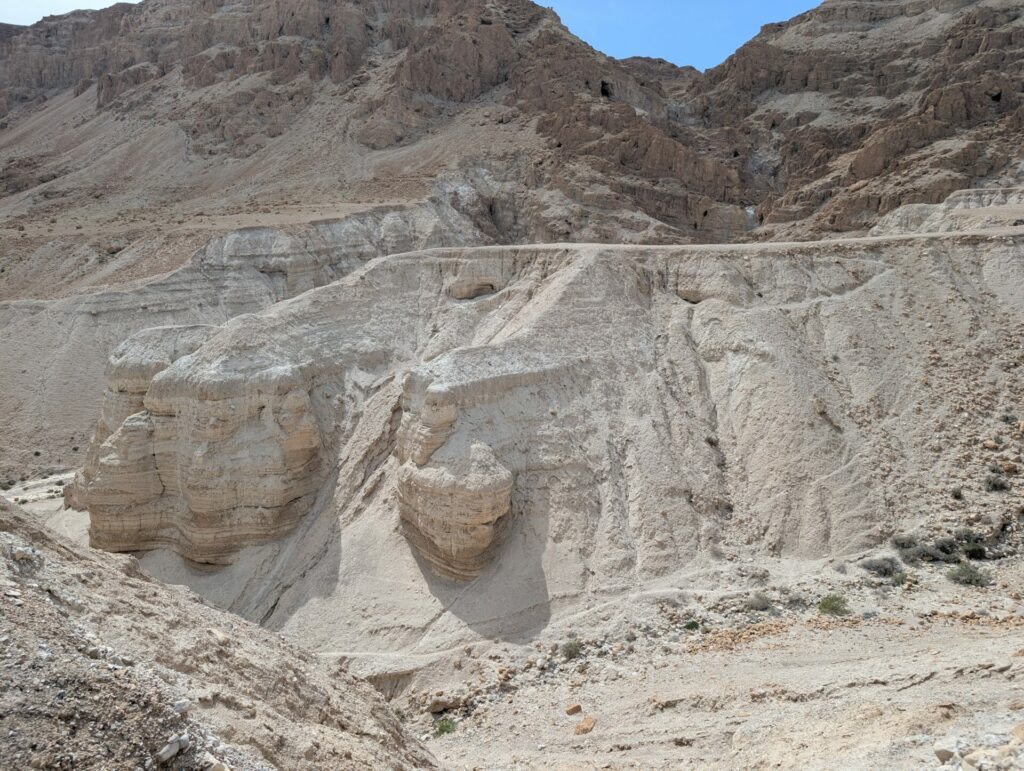
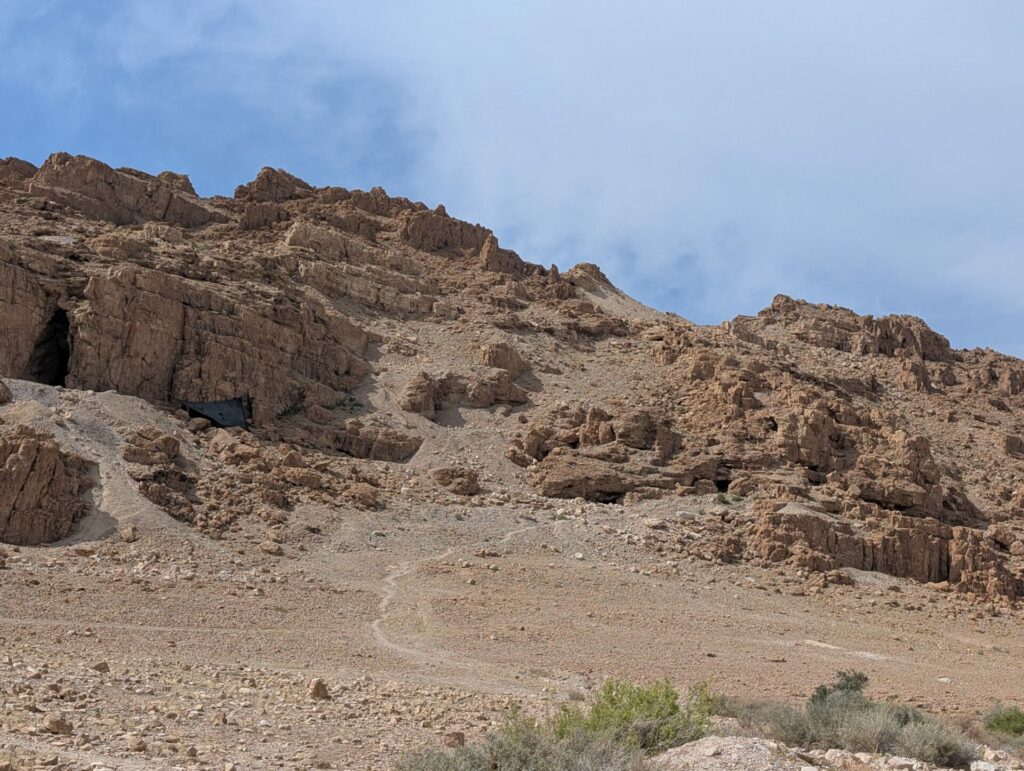
Day 9: Old City, The Cardo, Temple Mount, Wailing Wall, Via Dolorosa, Church of Holy Sepulcher
We saved touring the old city for our last day. We experienced the way the central street – “The Cardo” – would have looked in ancient times. We sat at the steps of the temple where Jesus taught. We marveled at the spectacle of the Wailing Wall.

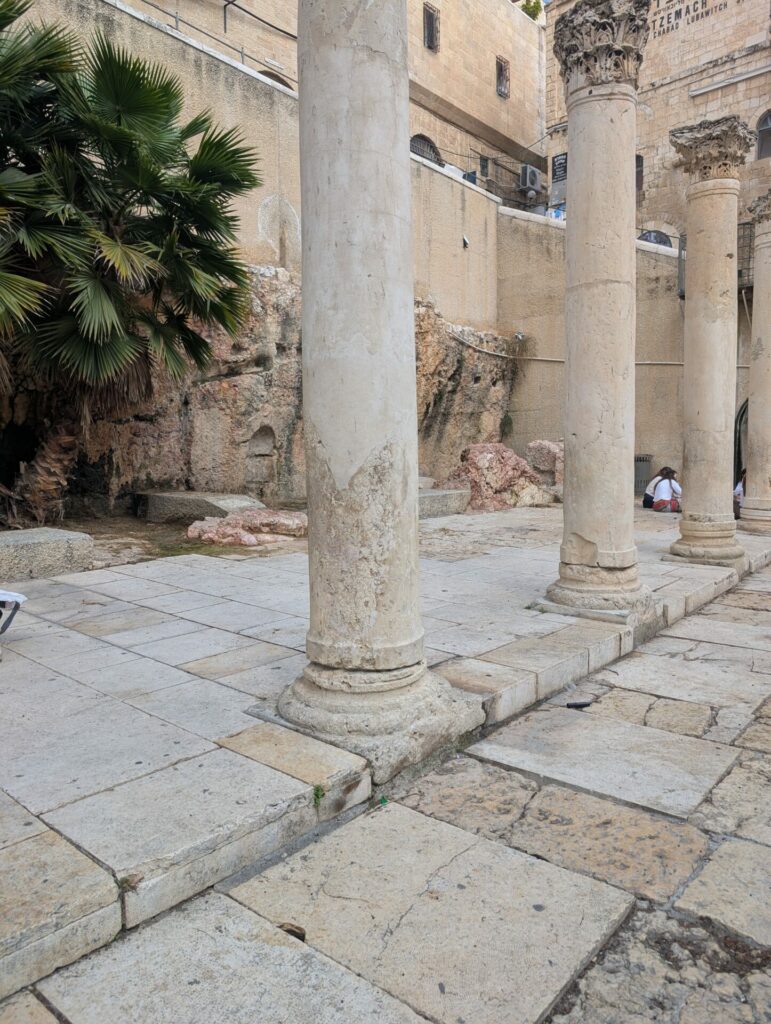
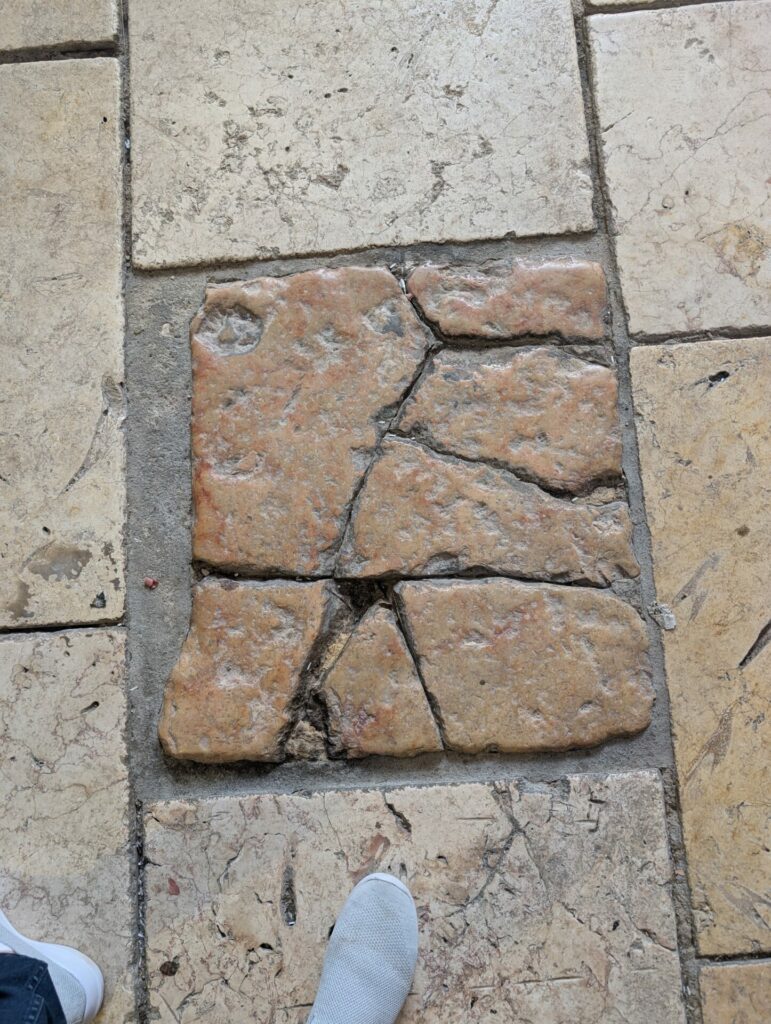
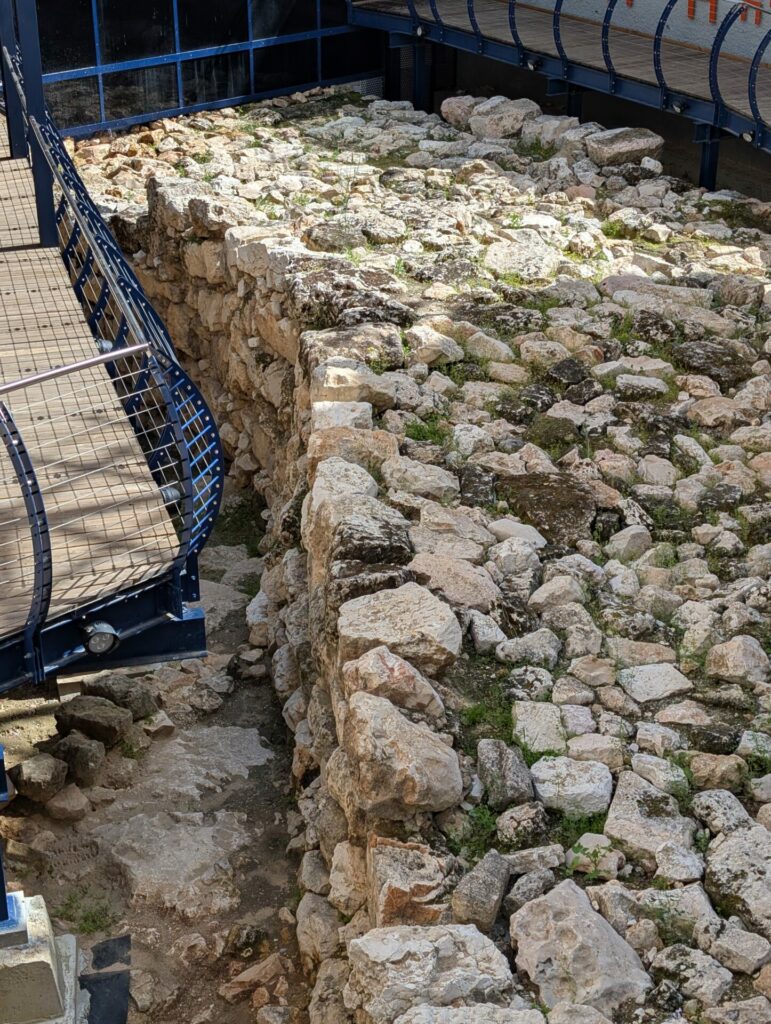
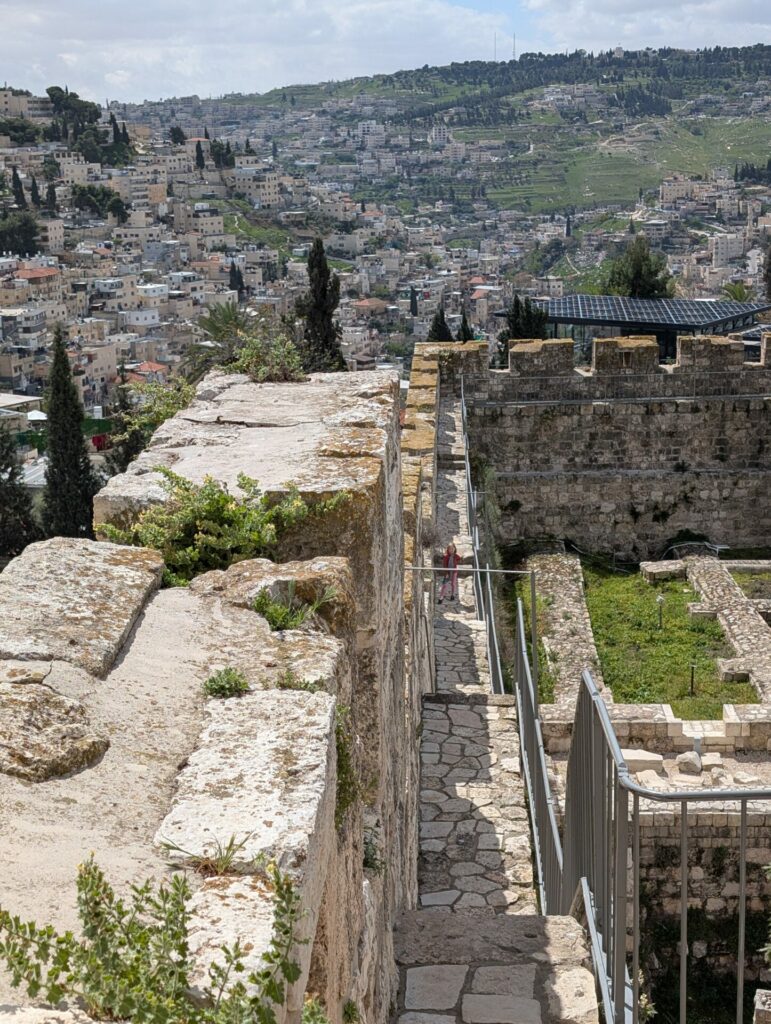


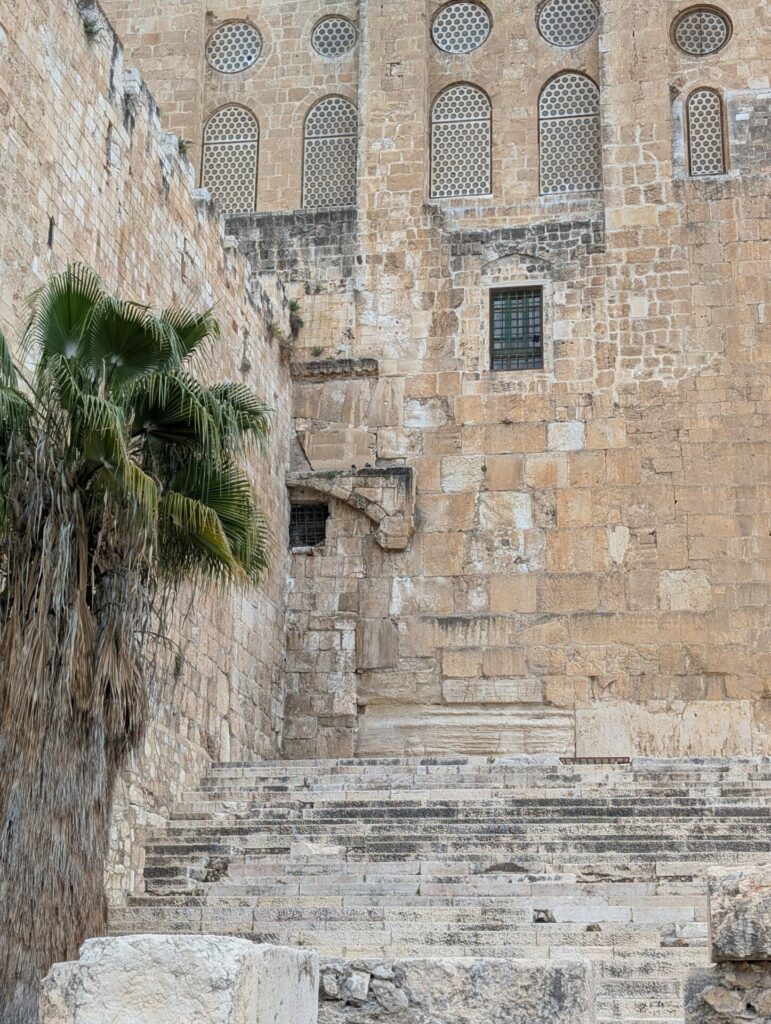

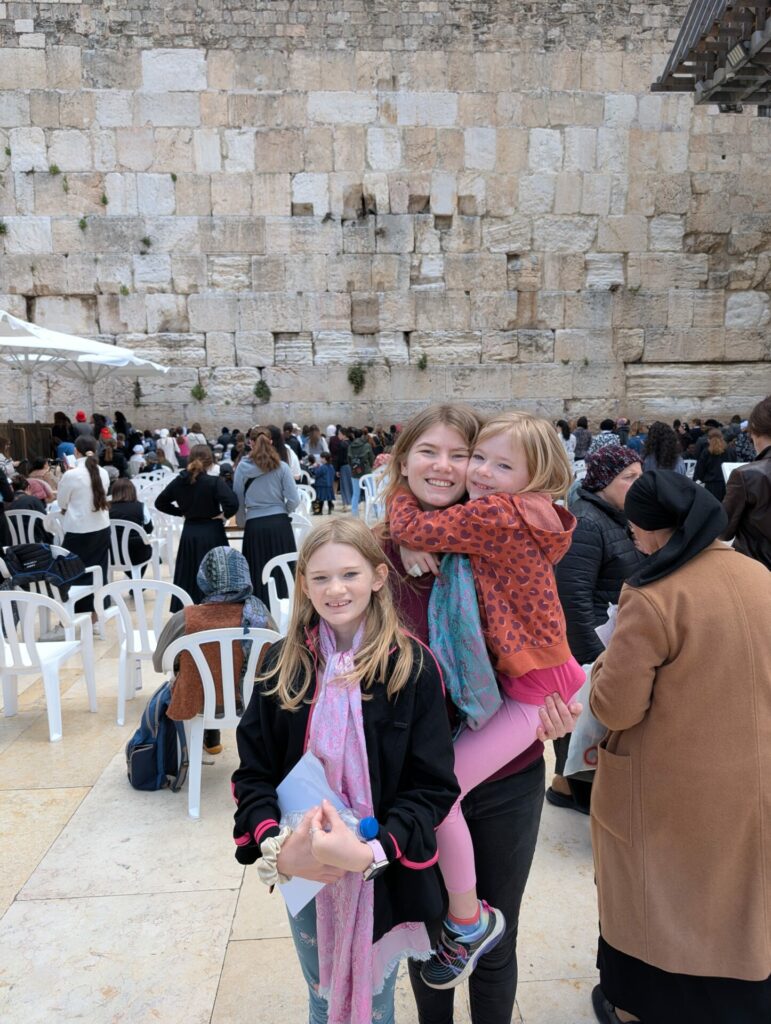

We walked the path that tradition says Jesus carried his cross, and visited the second site claiming to be where Jesus’s body was lain. Honestly, the trip had been such a whirlwind already that it was hard to take it all in.

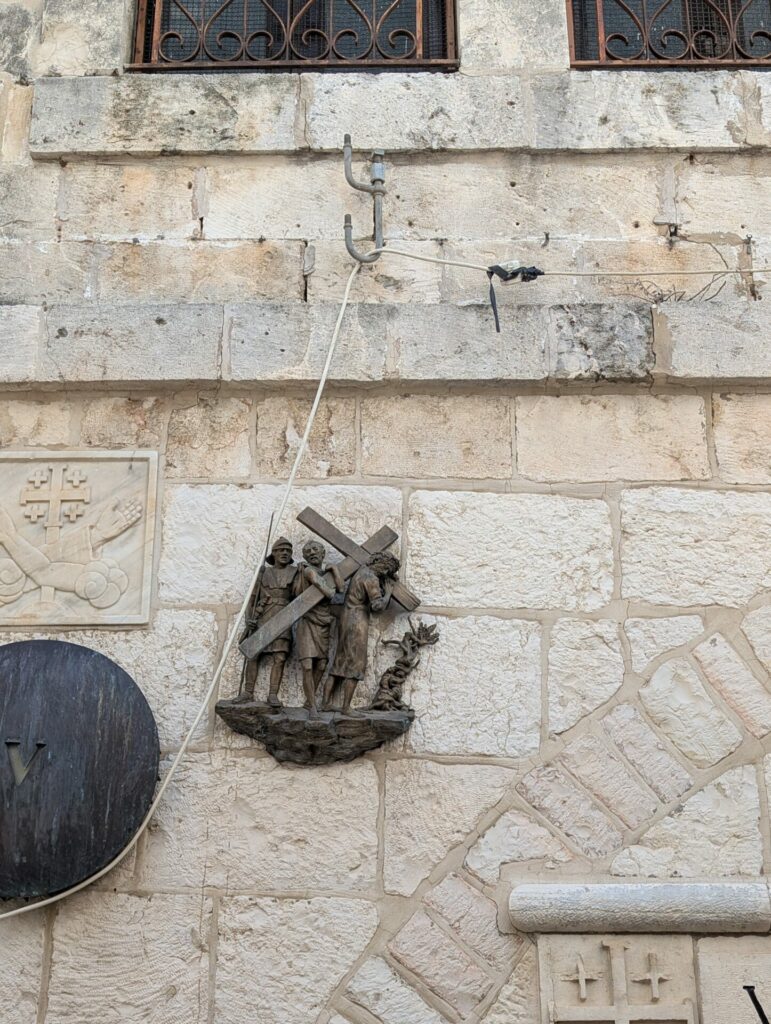
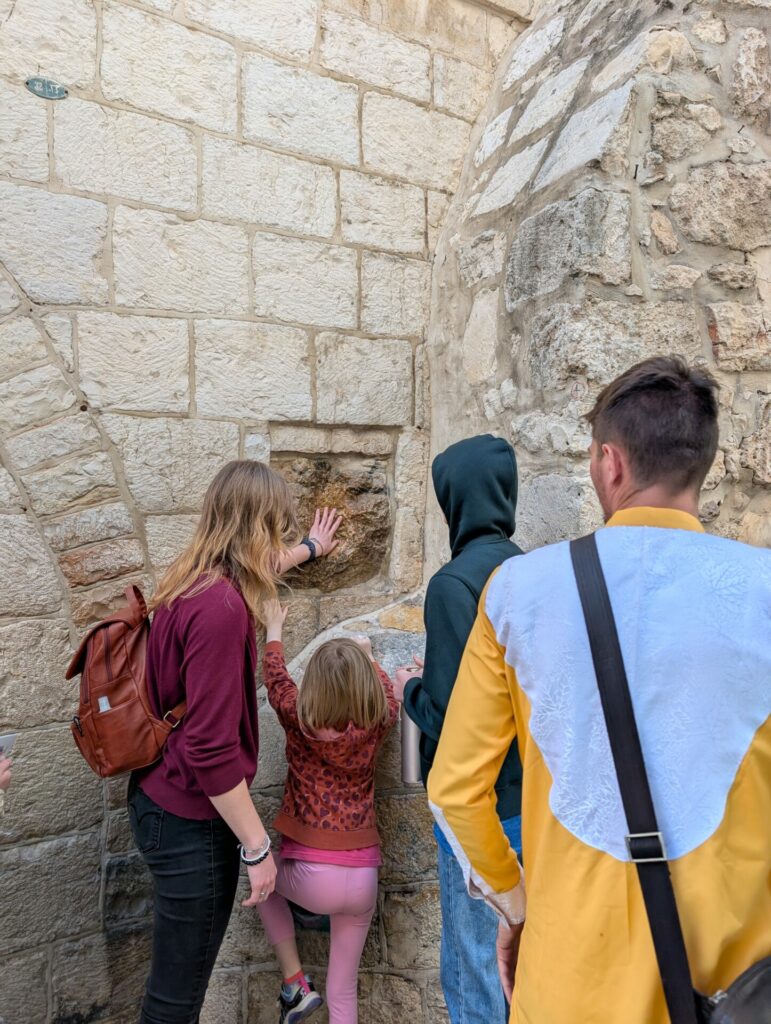
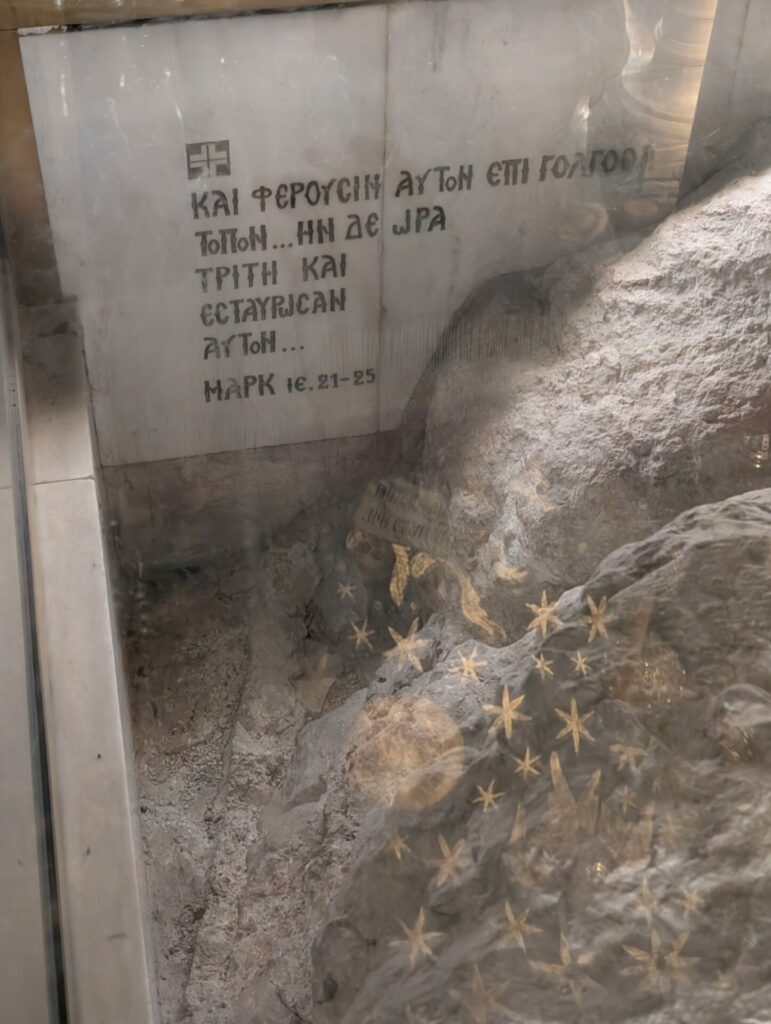
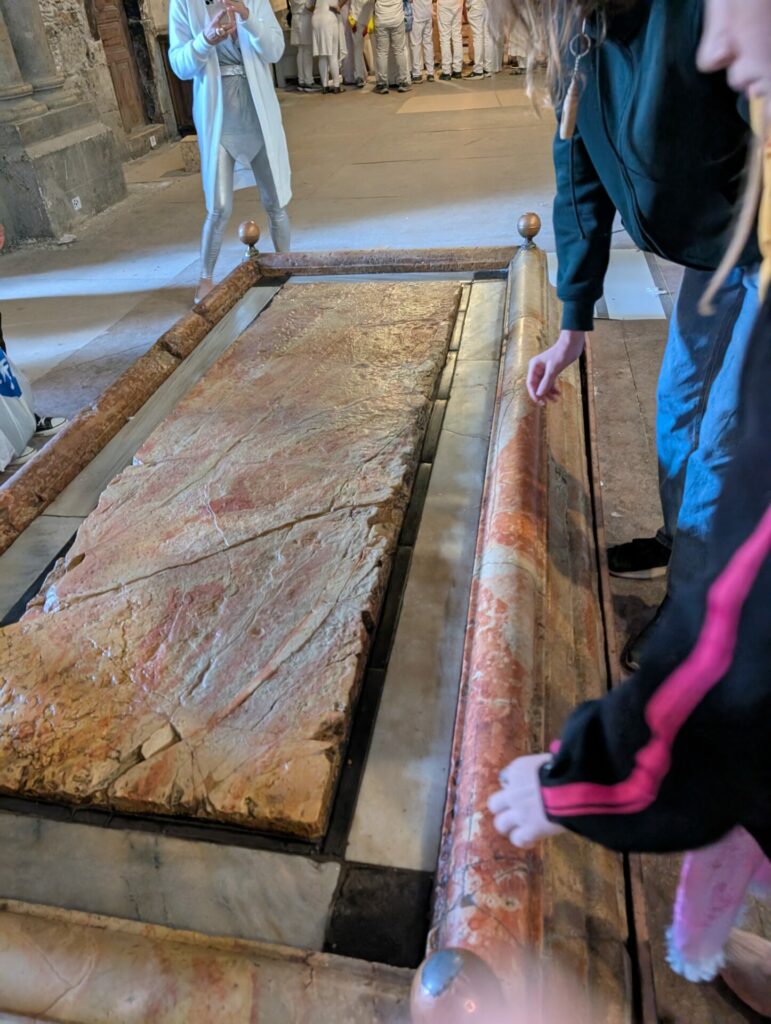
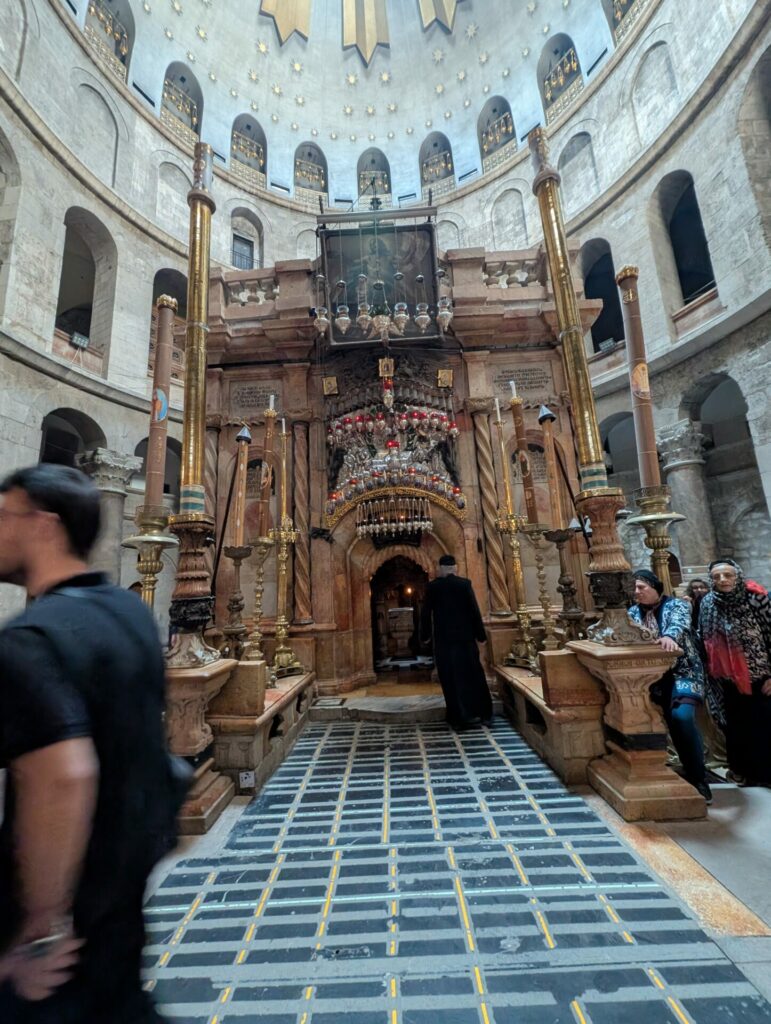
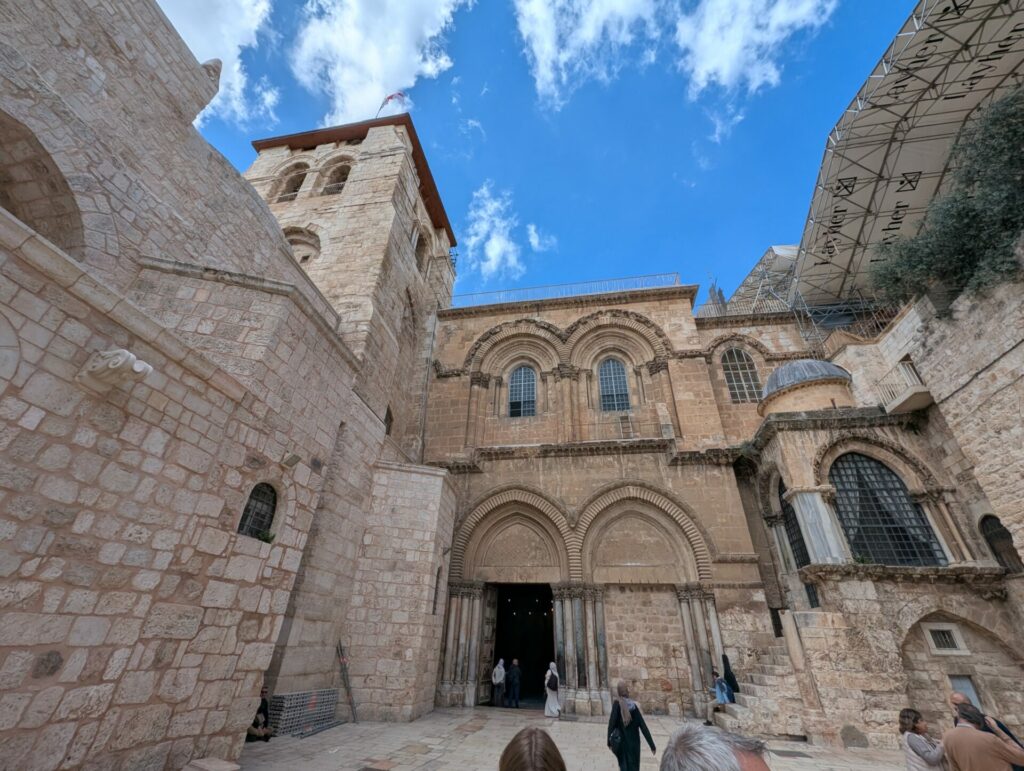
And just like that, it was over. The tour guide who had been so close to our family said goodbye, Bryson and McKenna had a middle-of-the-night flight to catch, and our incredible journey had come to an end.
We can’t capture a fraction of what we saw and felt, but hope to have given a glimpse enough to encourage you to take the plunge – make the sacrifice – prioritize creating memories with your family that will last a lifetime and bring you closer not only together, but to your Eternal Father.


A huge thanks belongs here to our friend and private guide, Aladdin. He took every care for our family from the early planning stages – helping us know where to stay affordably and safely, making sure we knew everything we needed for safe arrival, and adjusting to our interests and needs at a moment’s notice. Aladdin, we wish only the best for you and your family!
Aladinsiyam@gmail.com
https://www.facebook.com/share/1FtzXysuWD
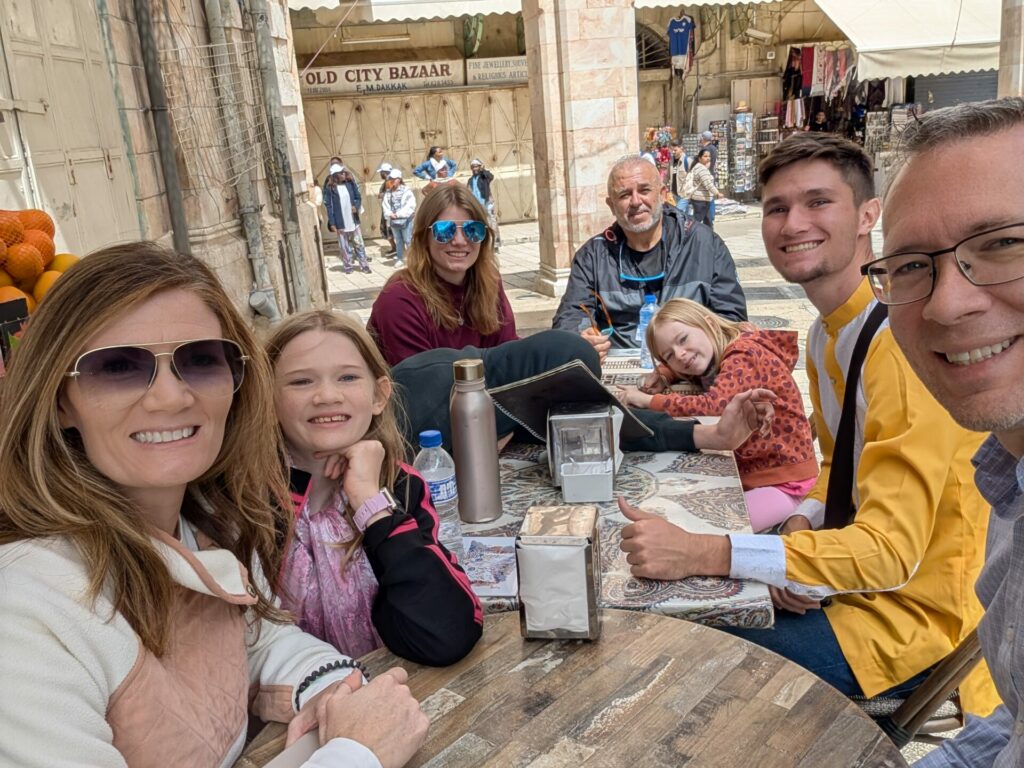
Thanks for a GREAT trip Aladdin!
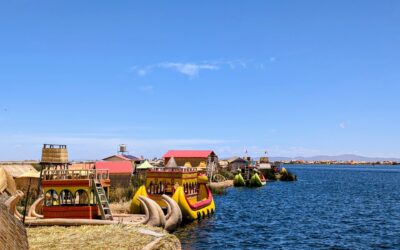
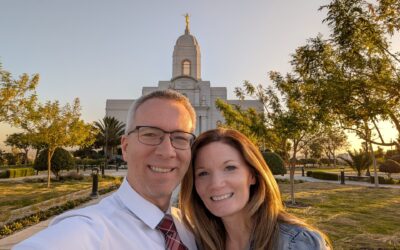
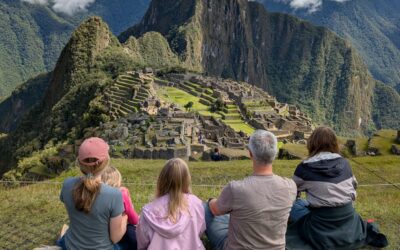
0 Comments